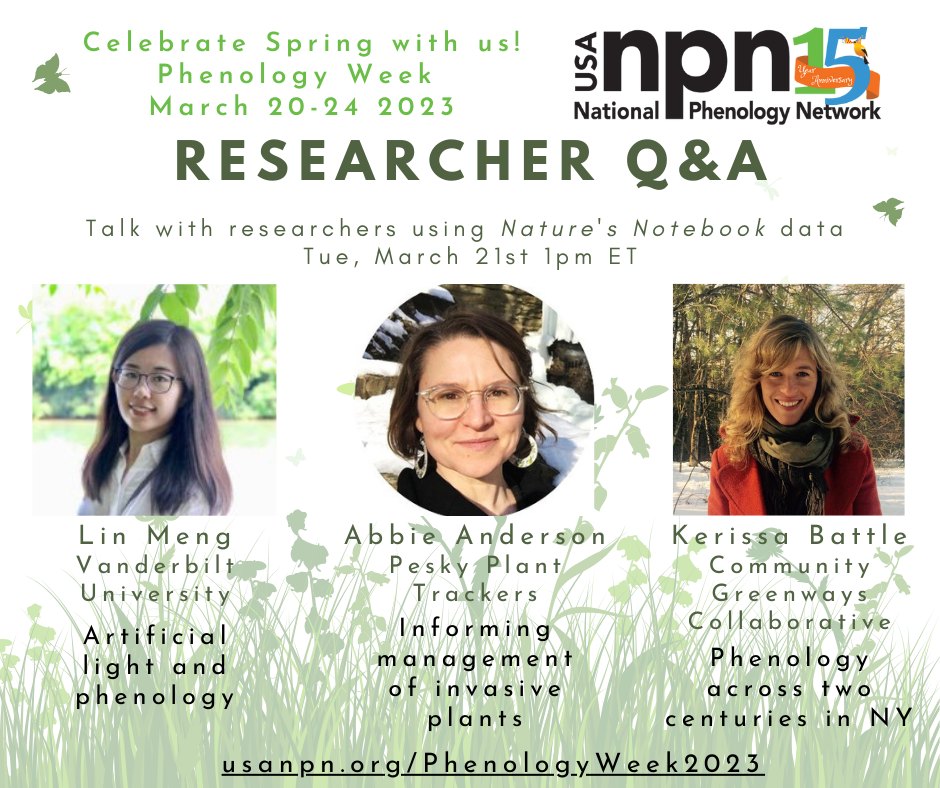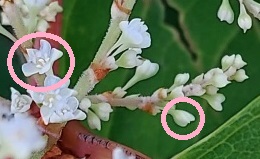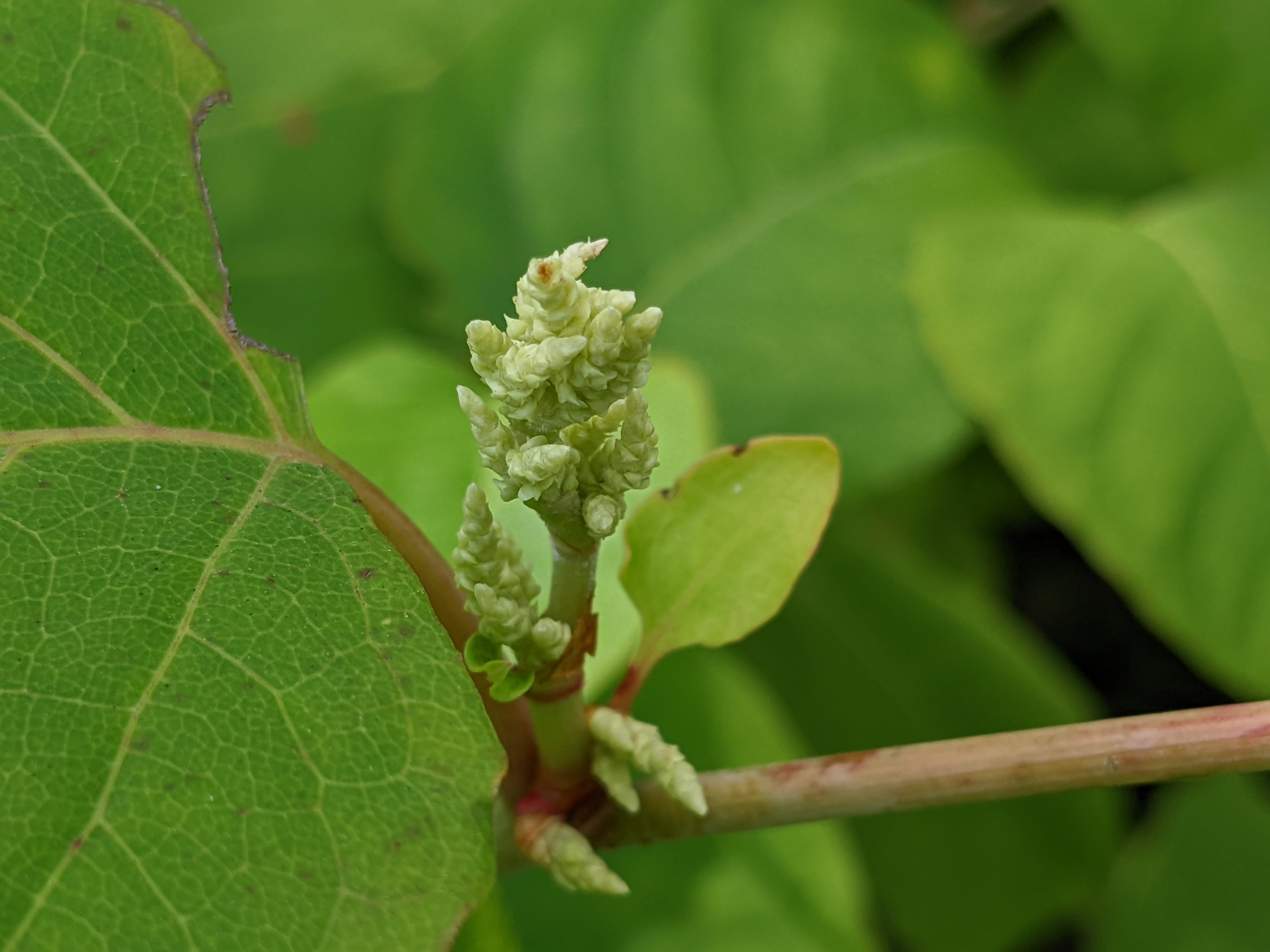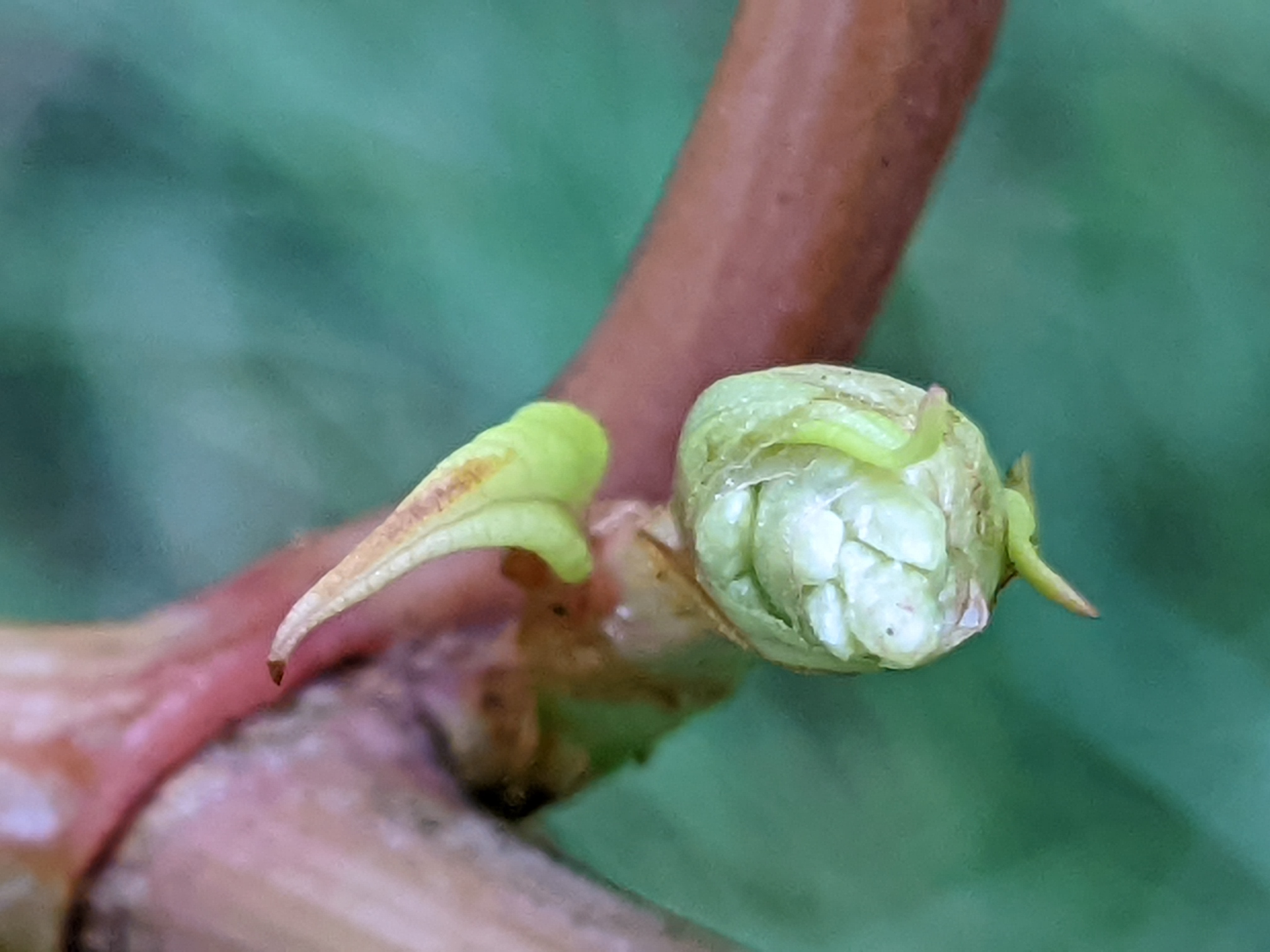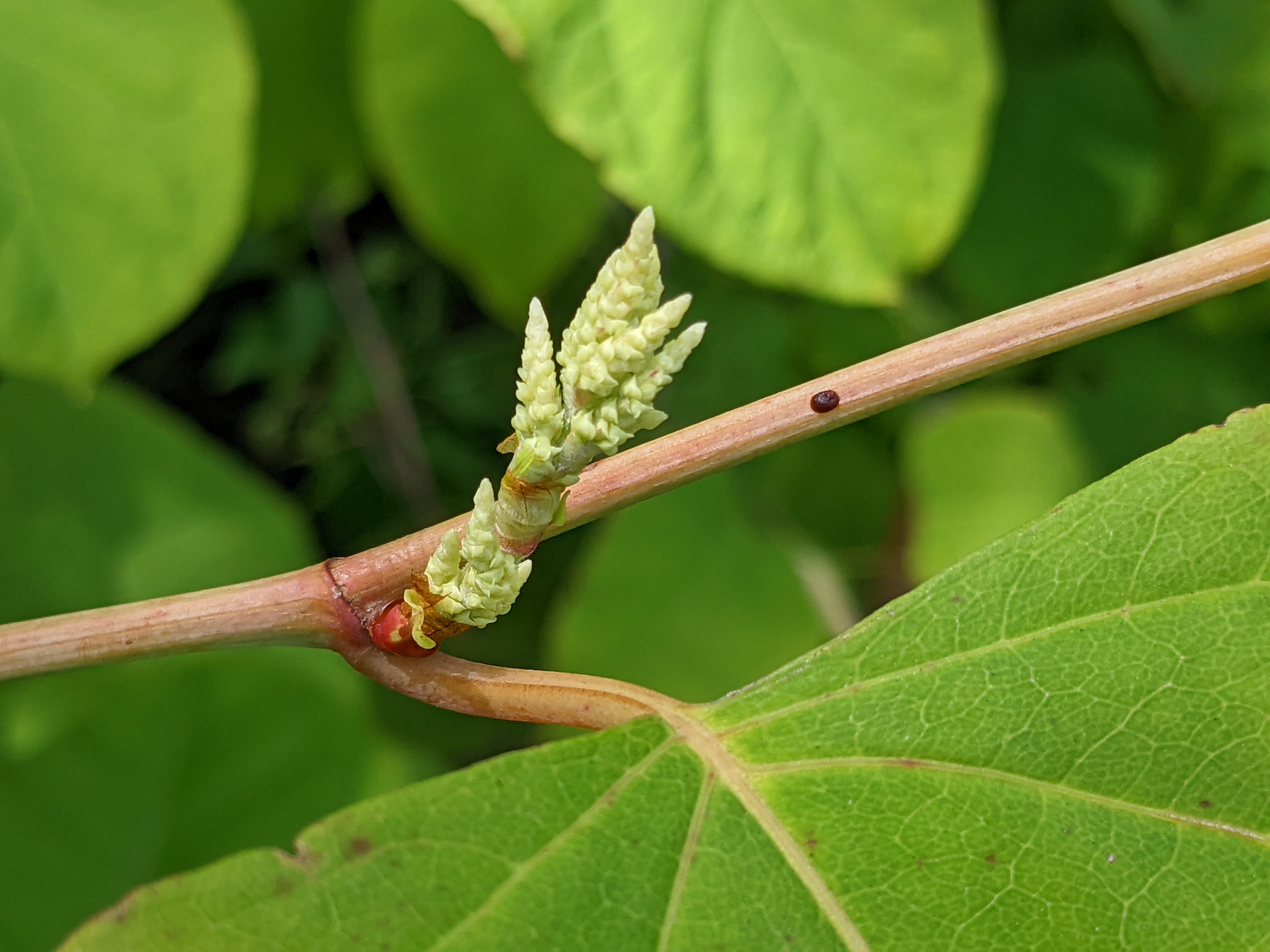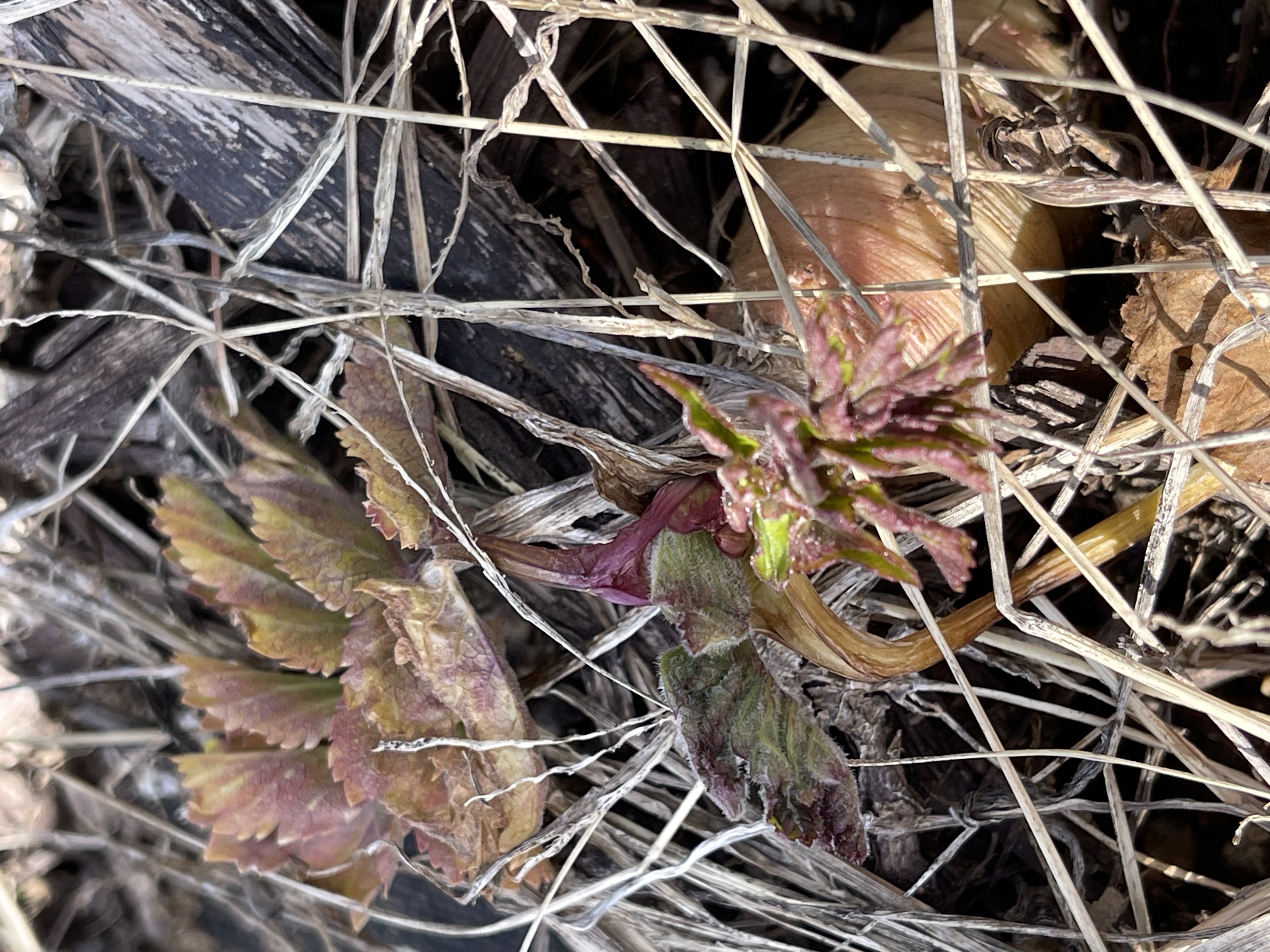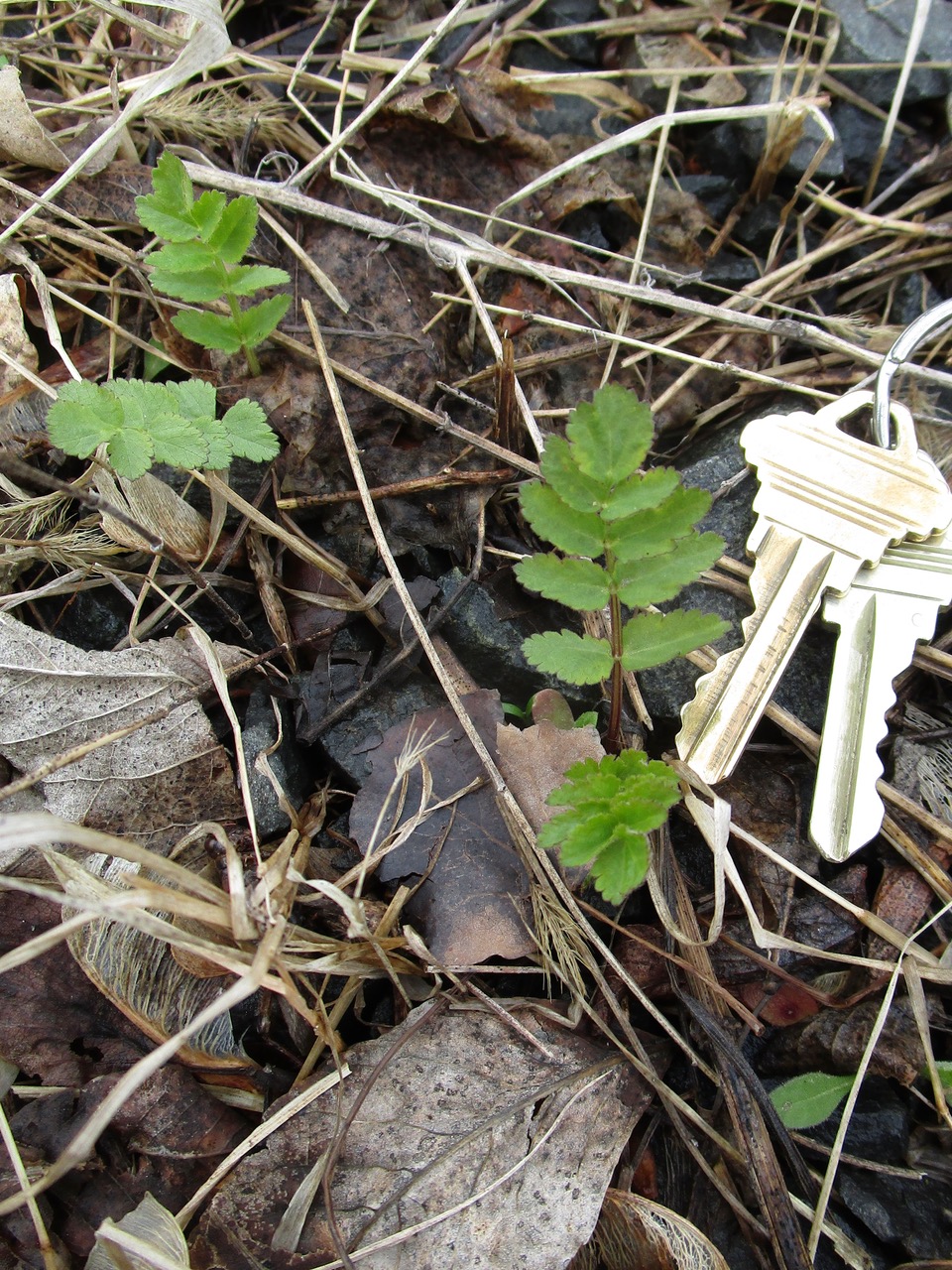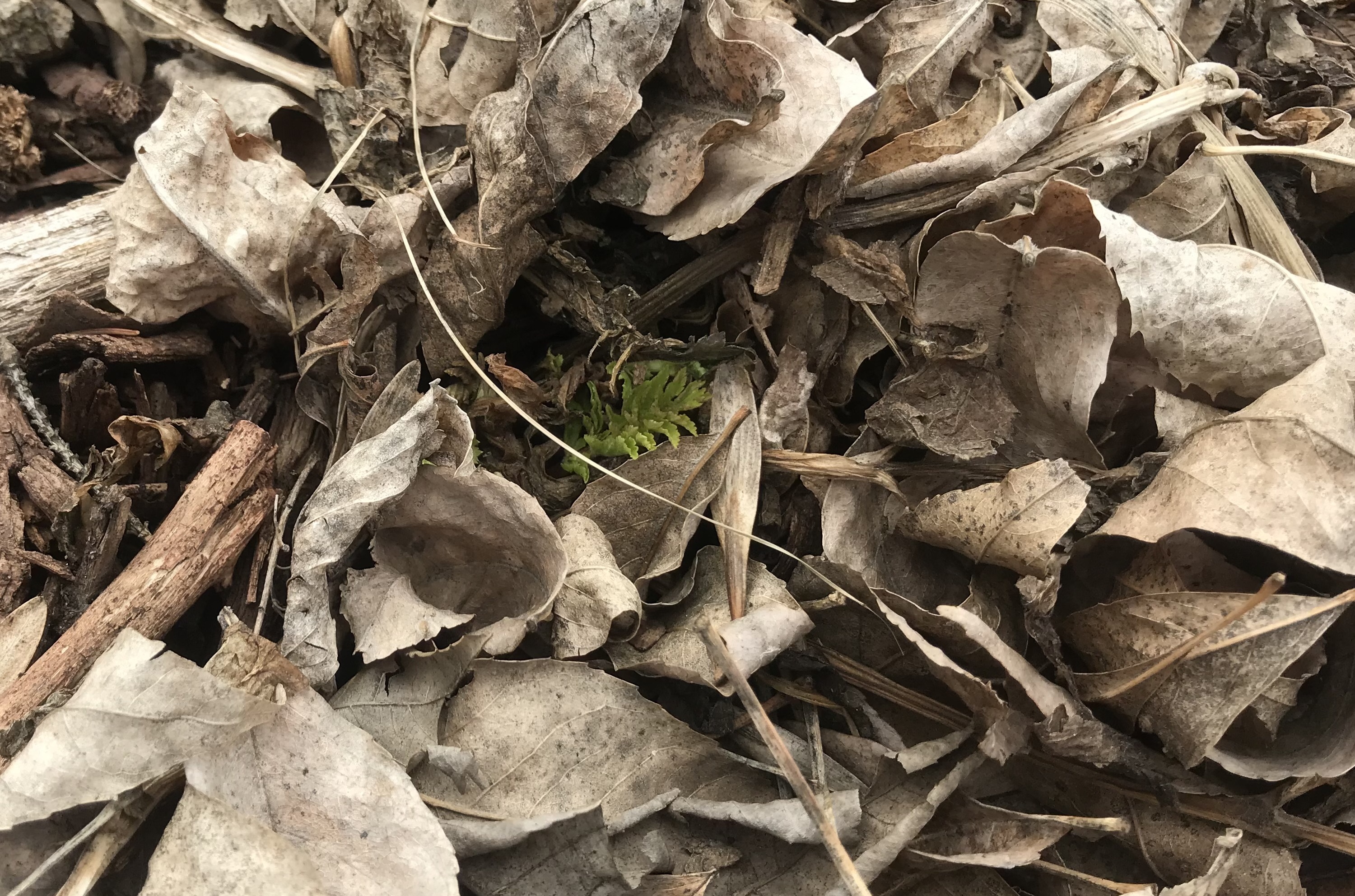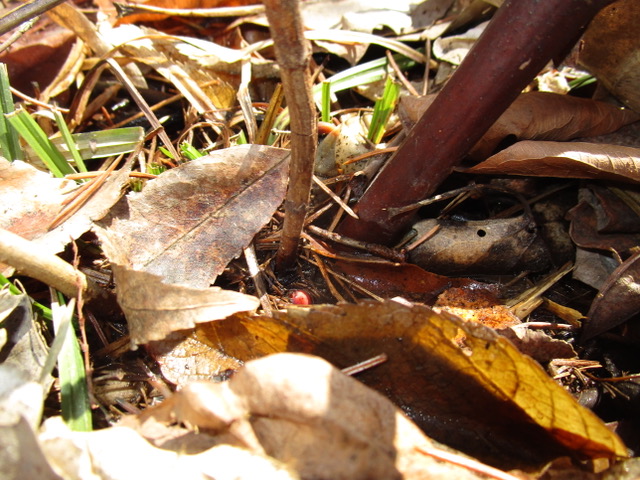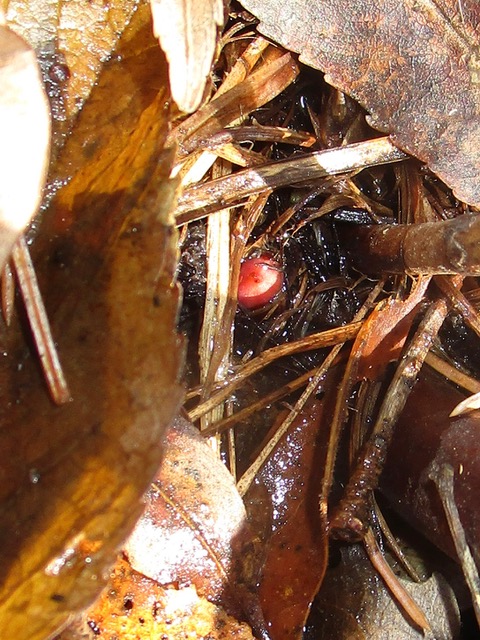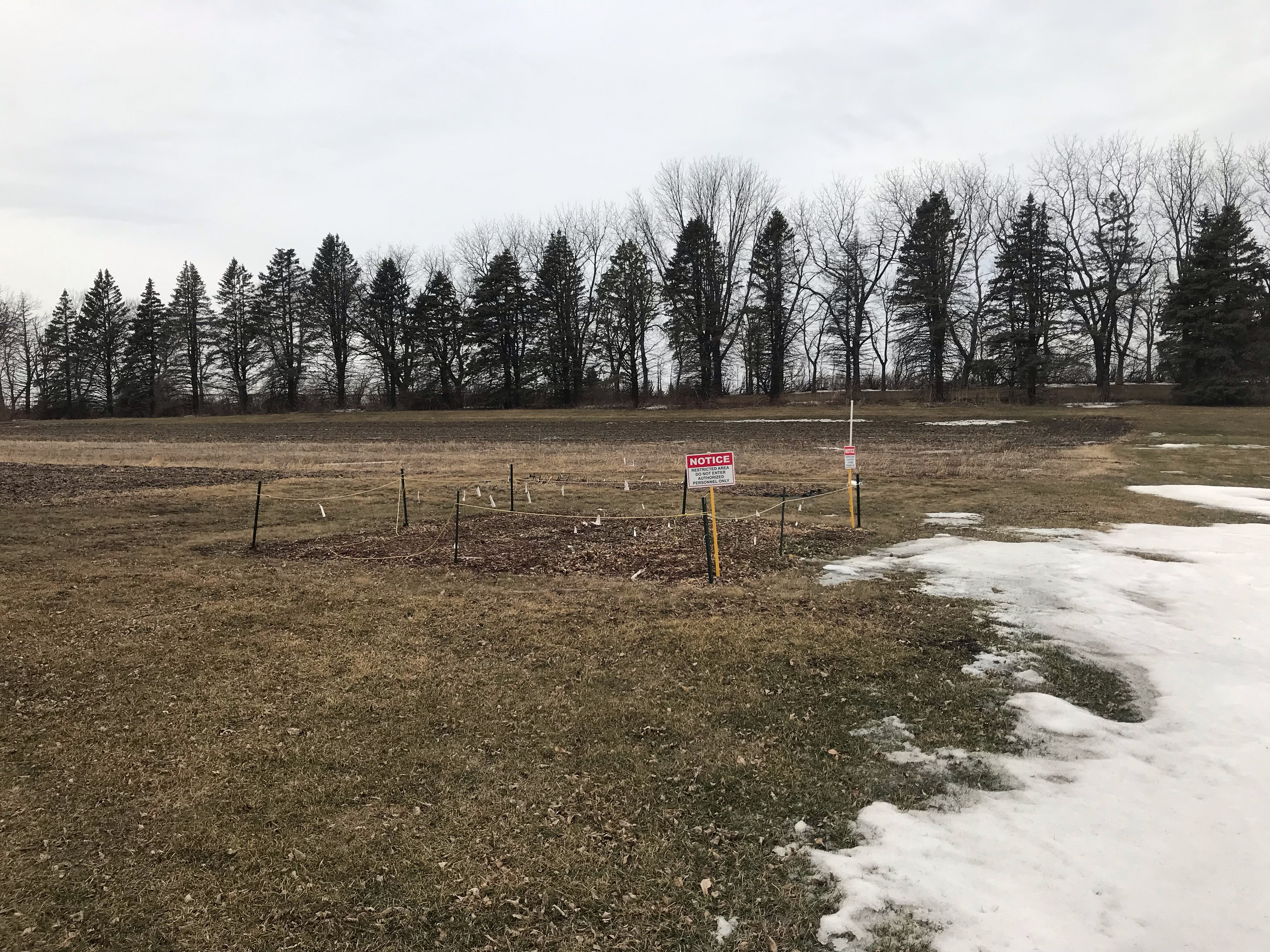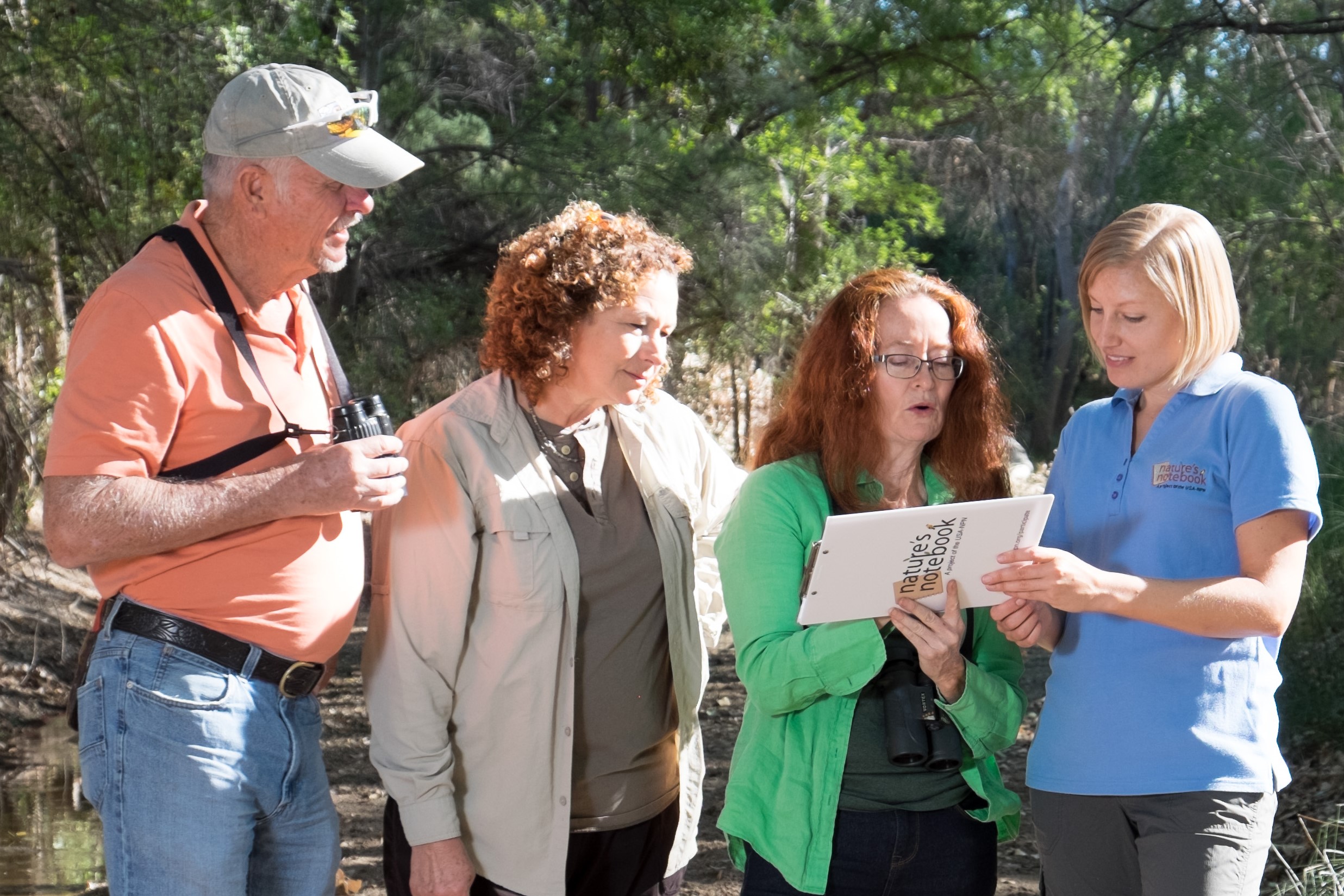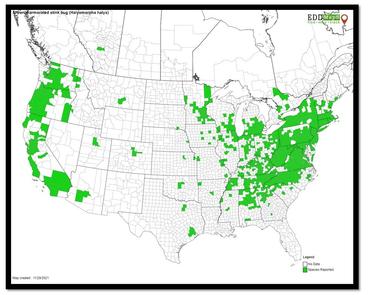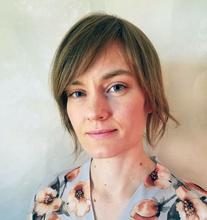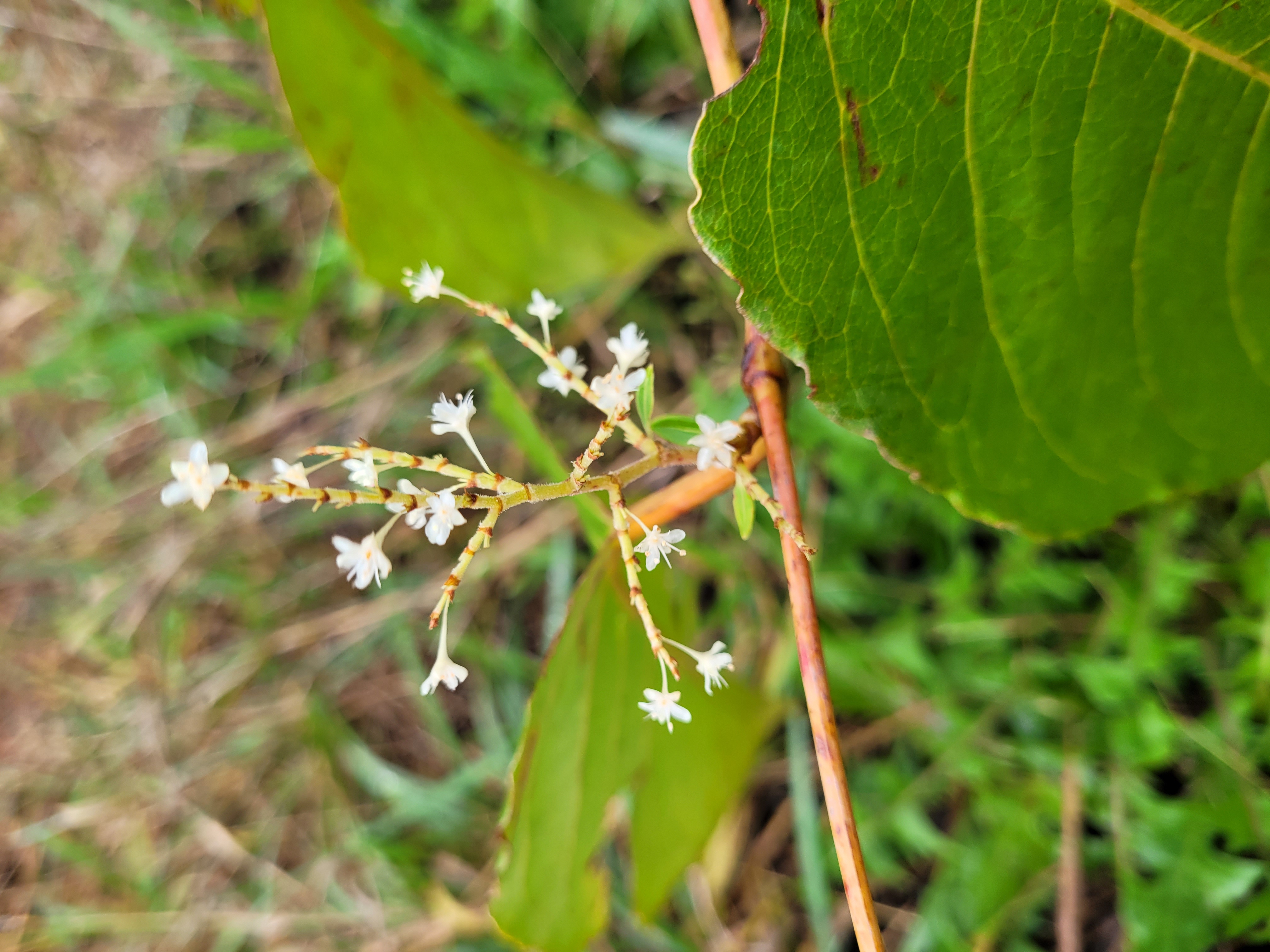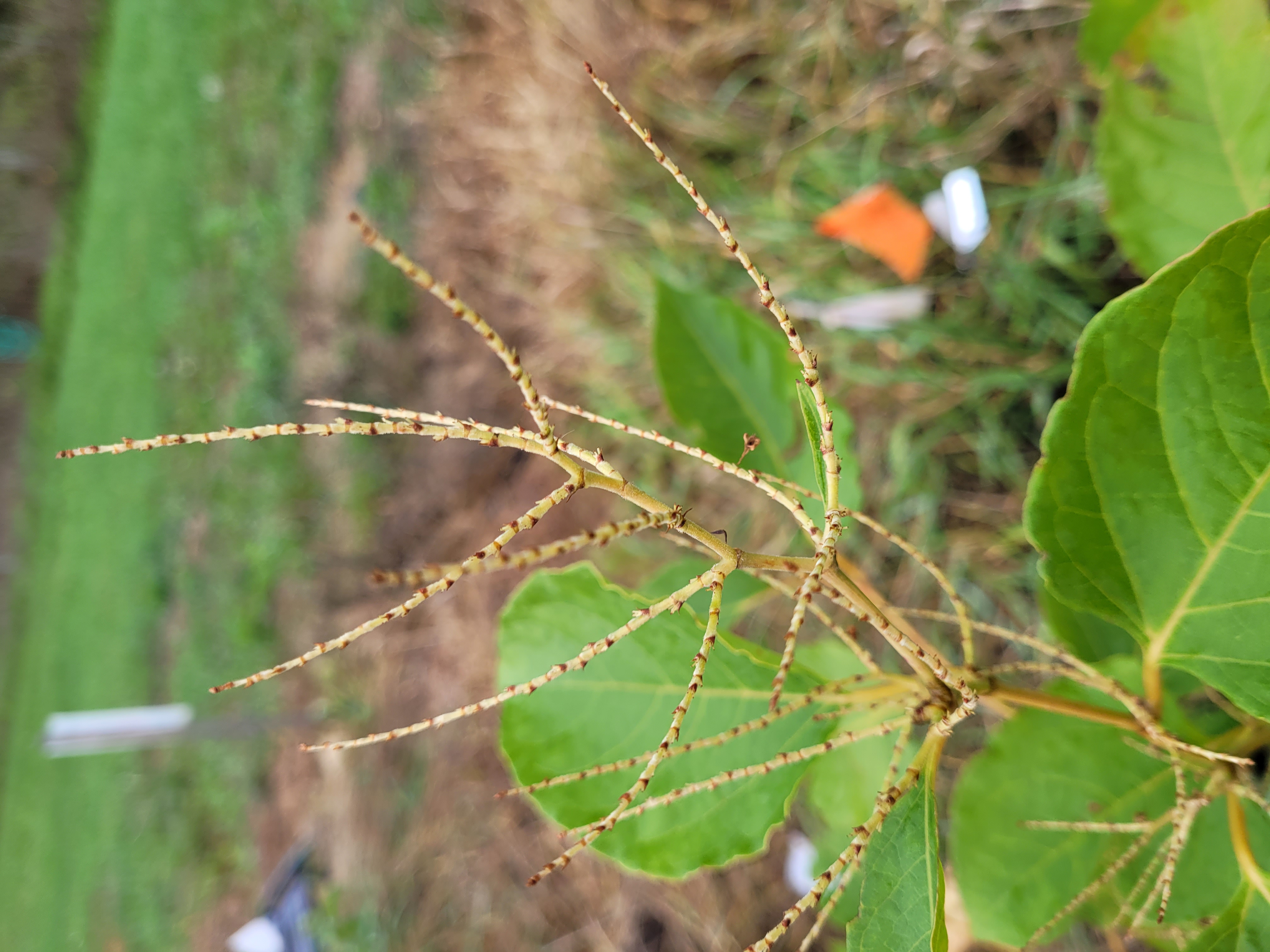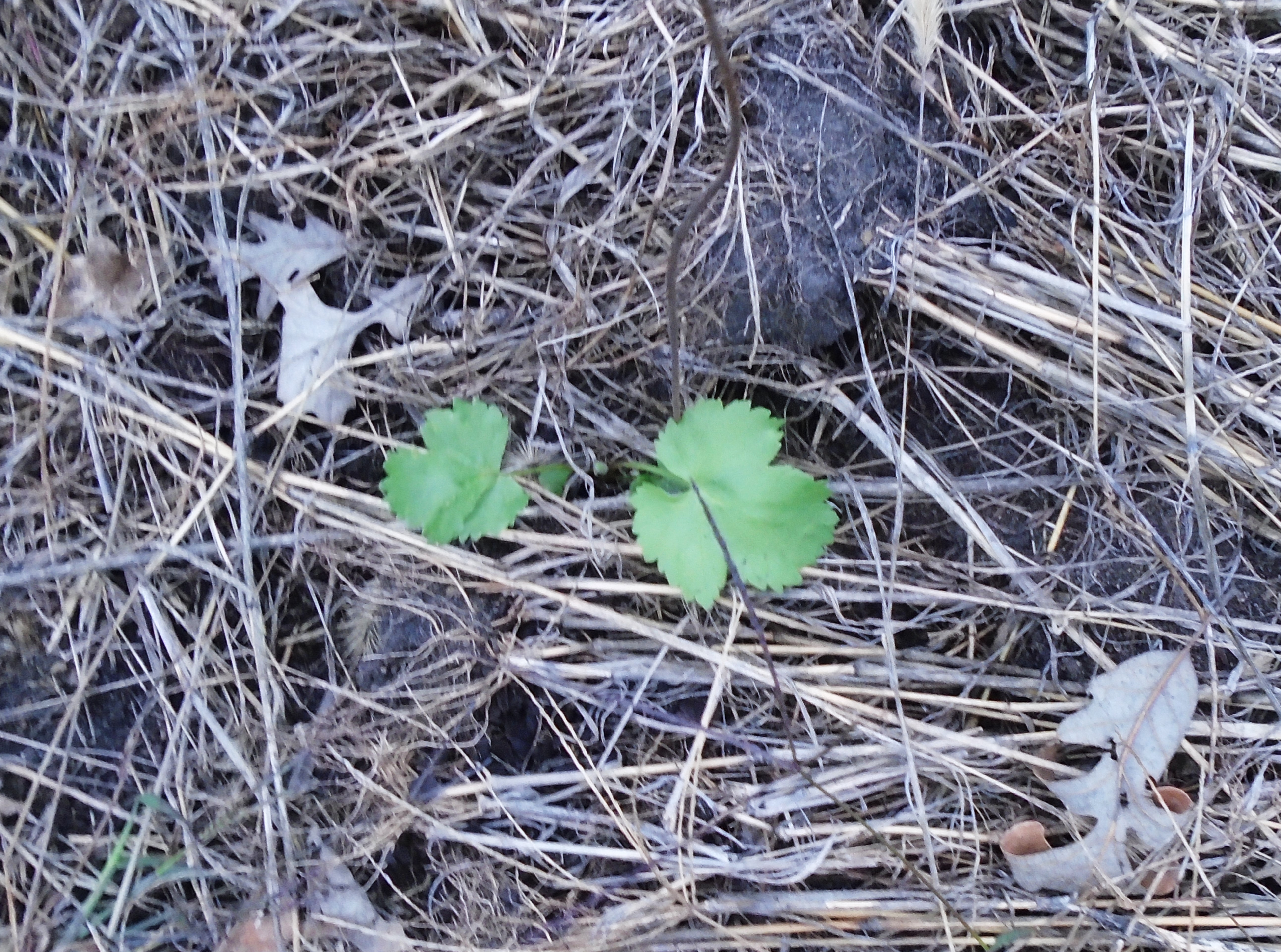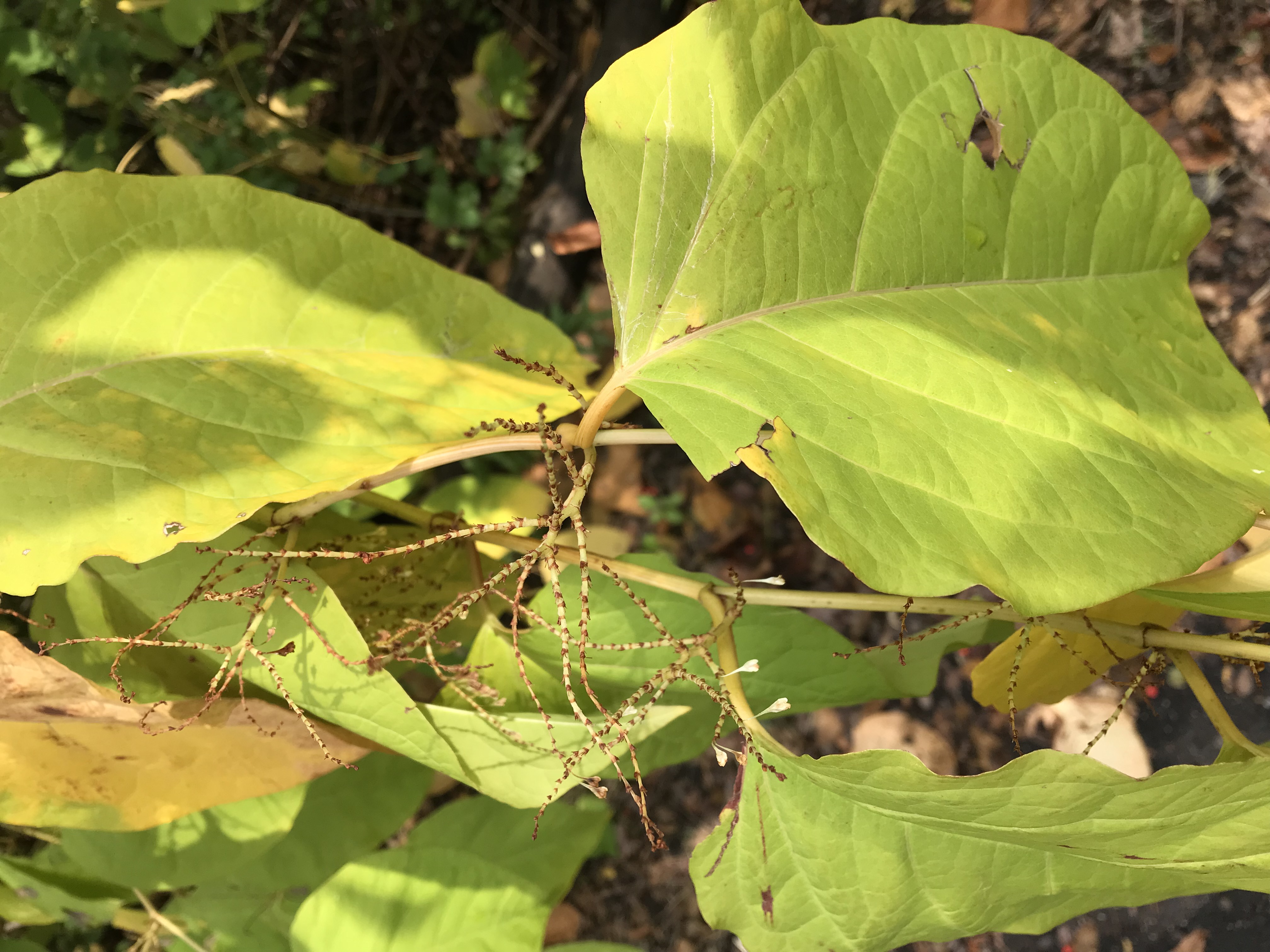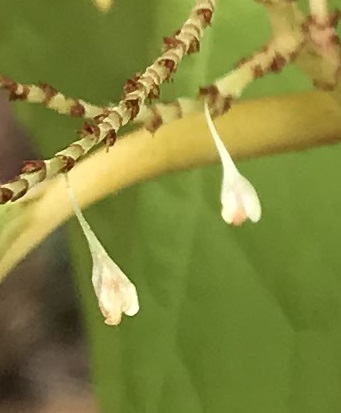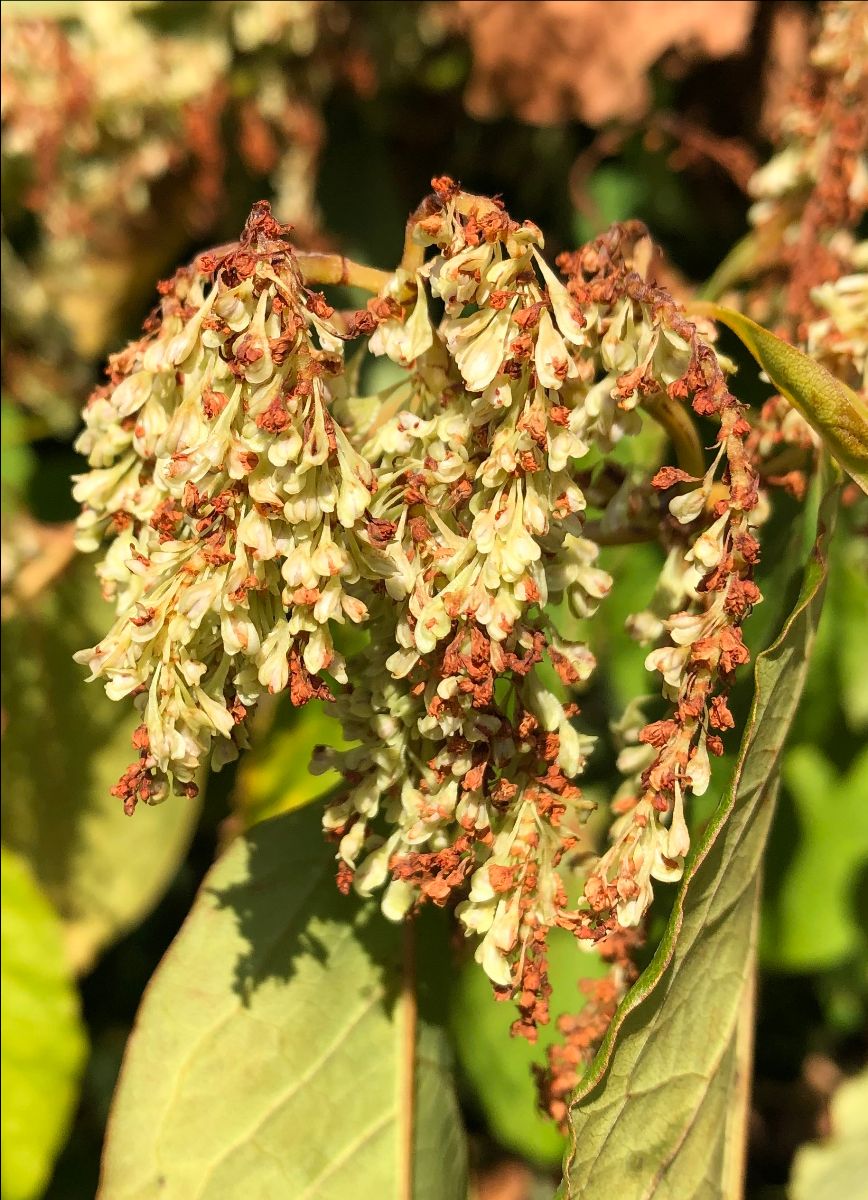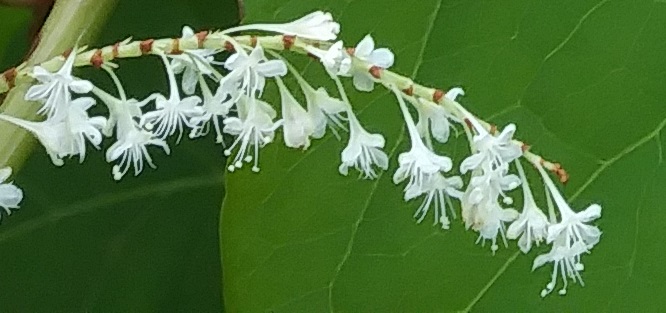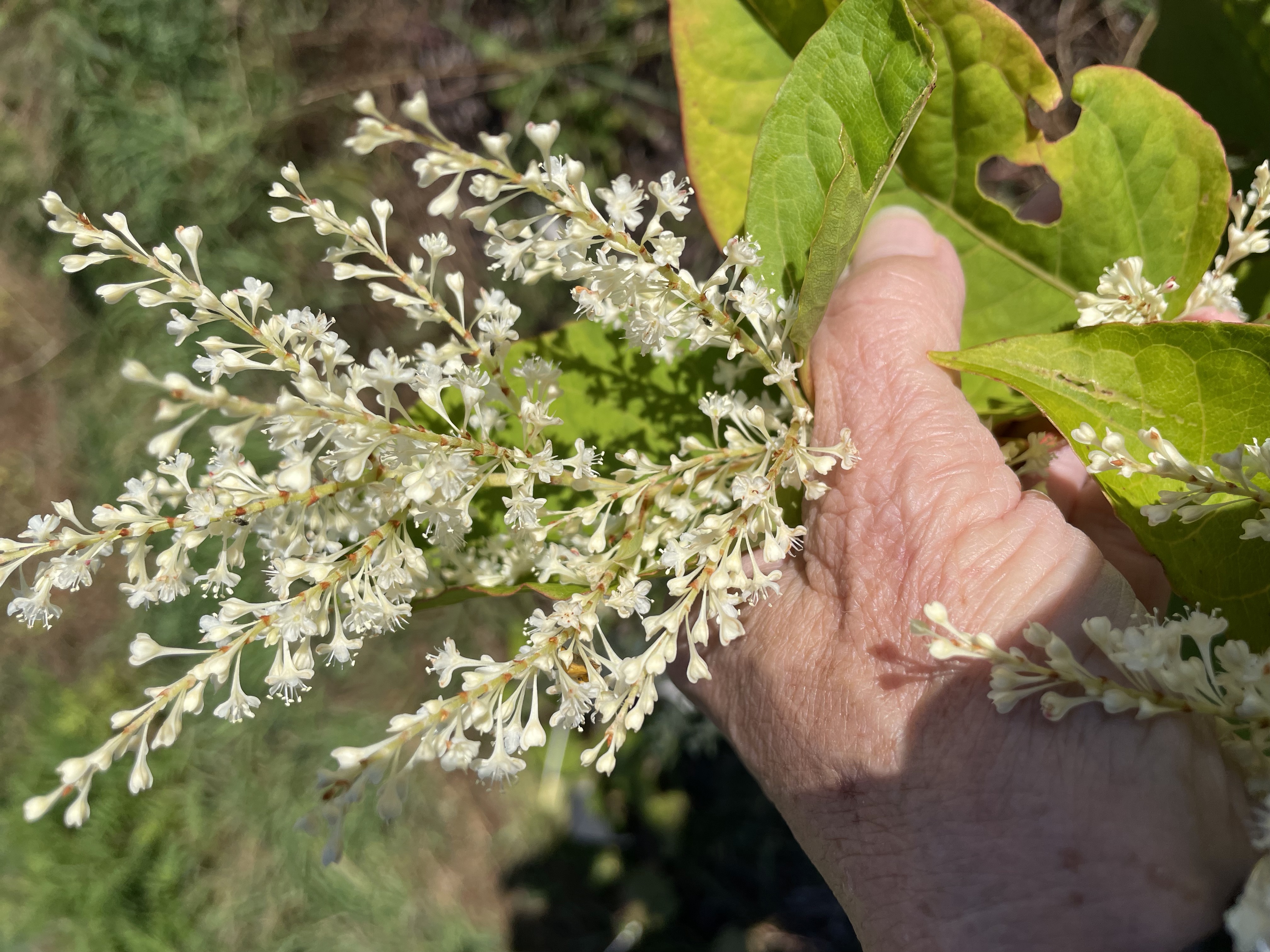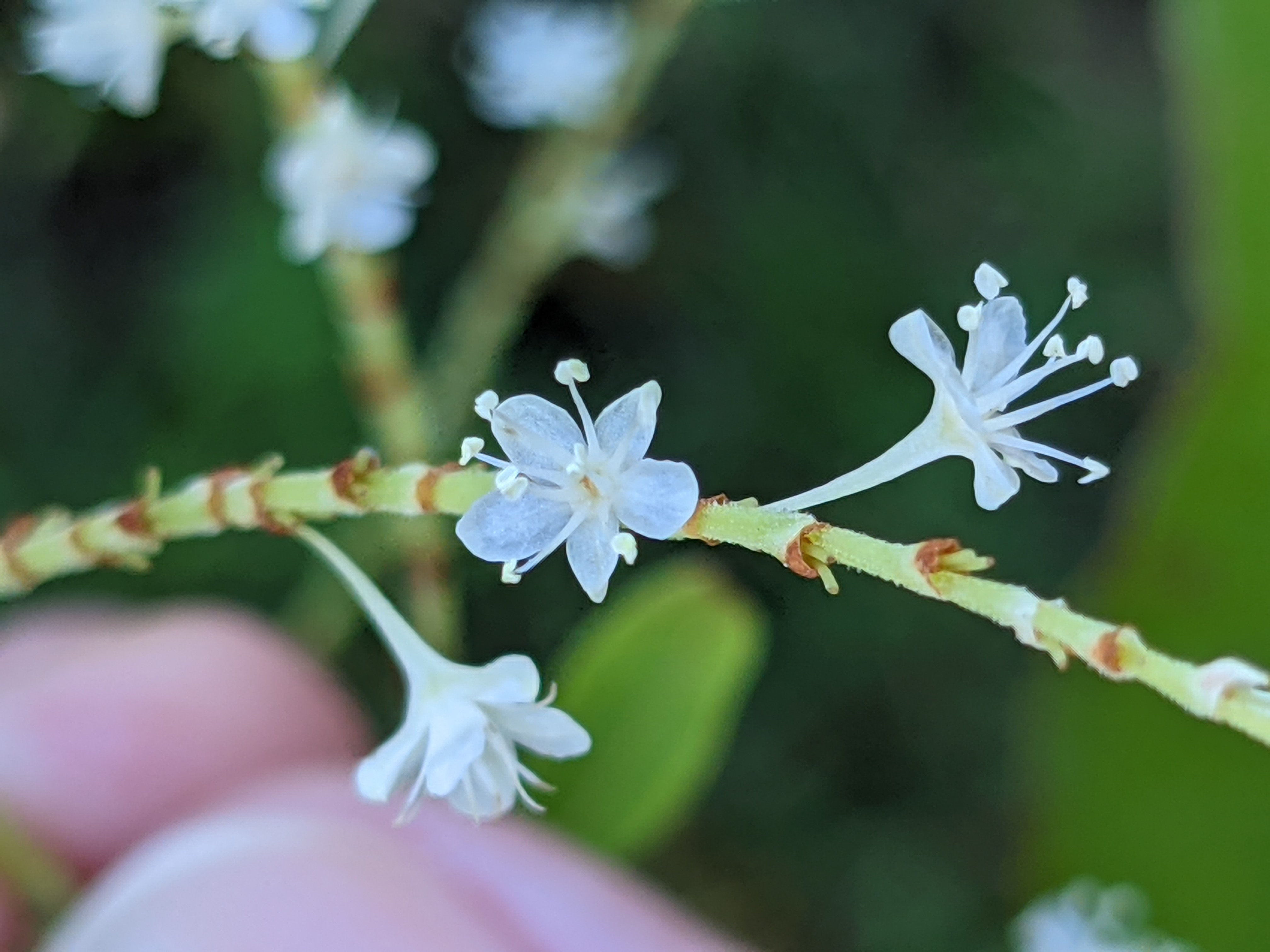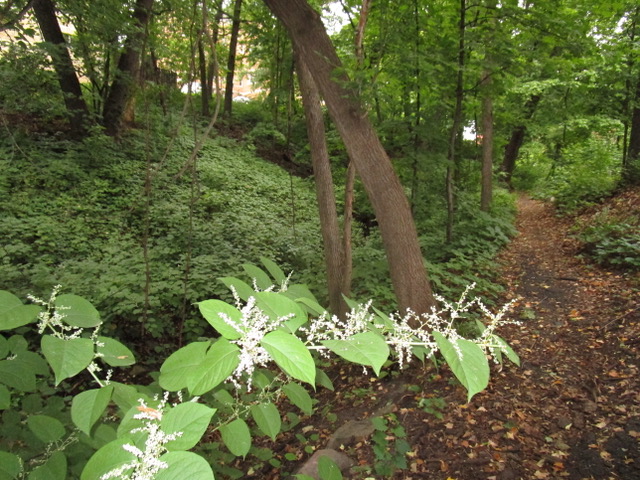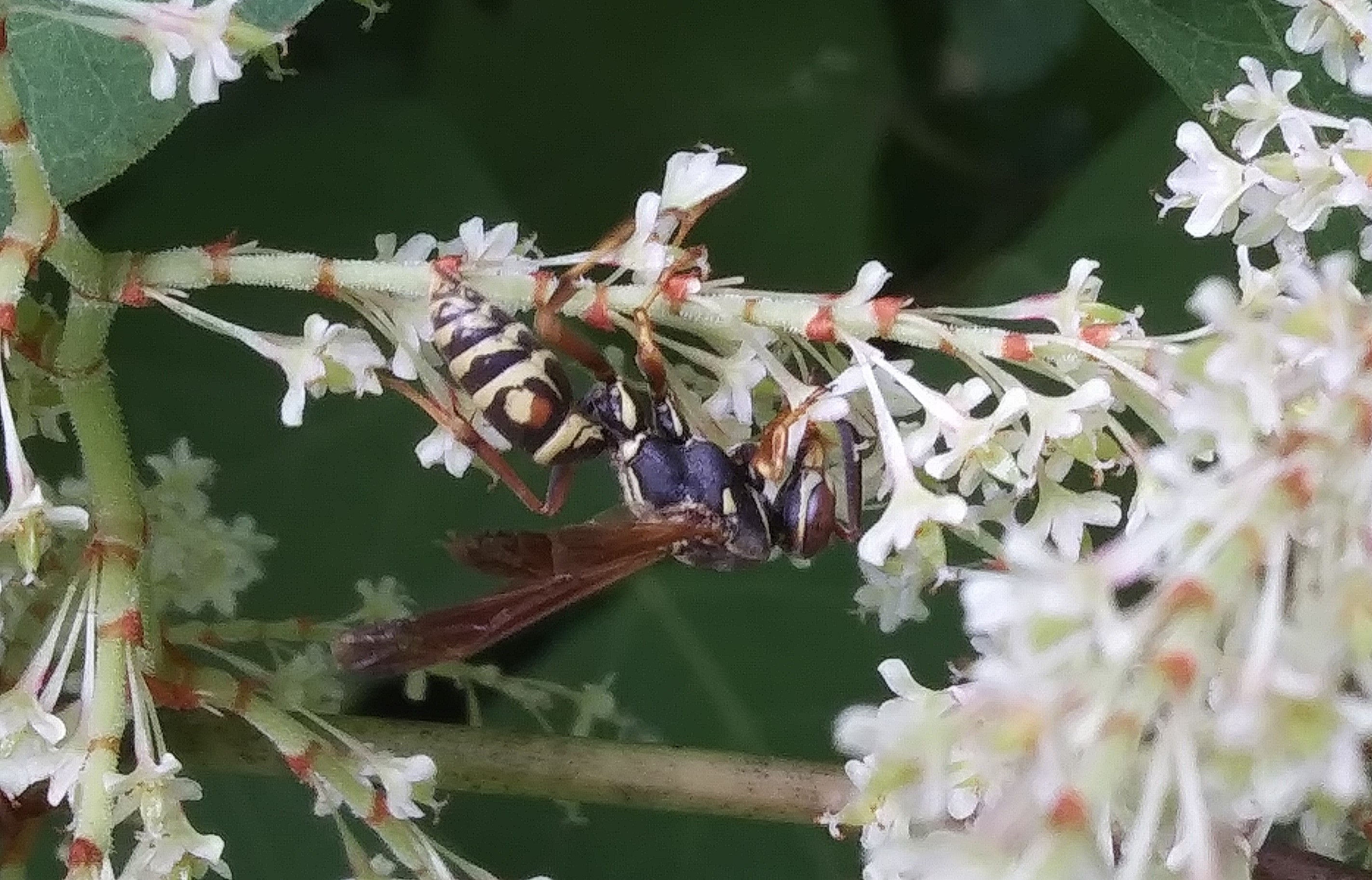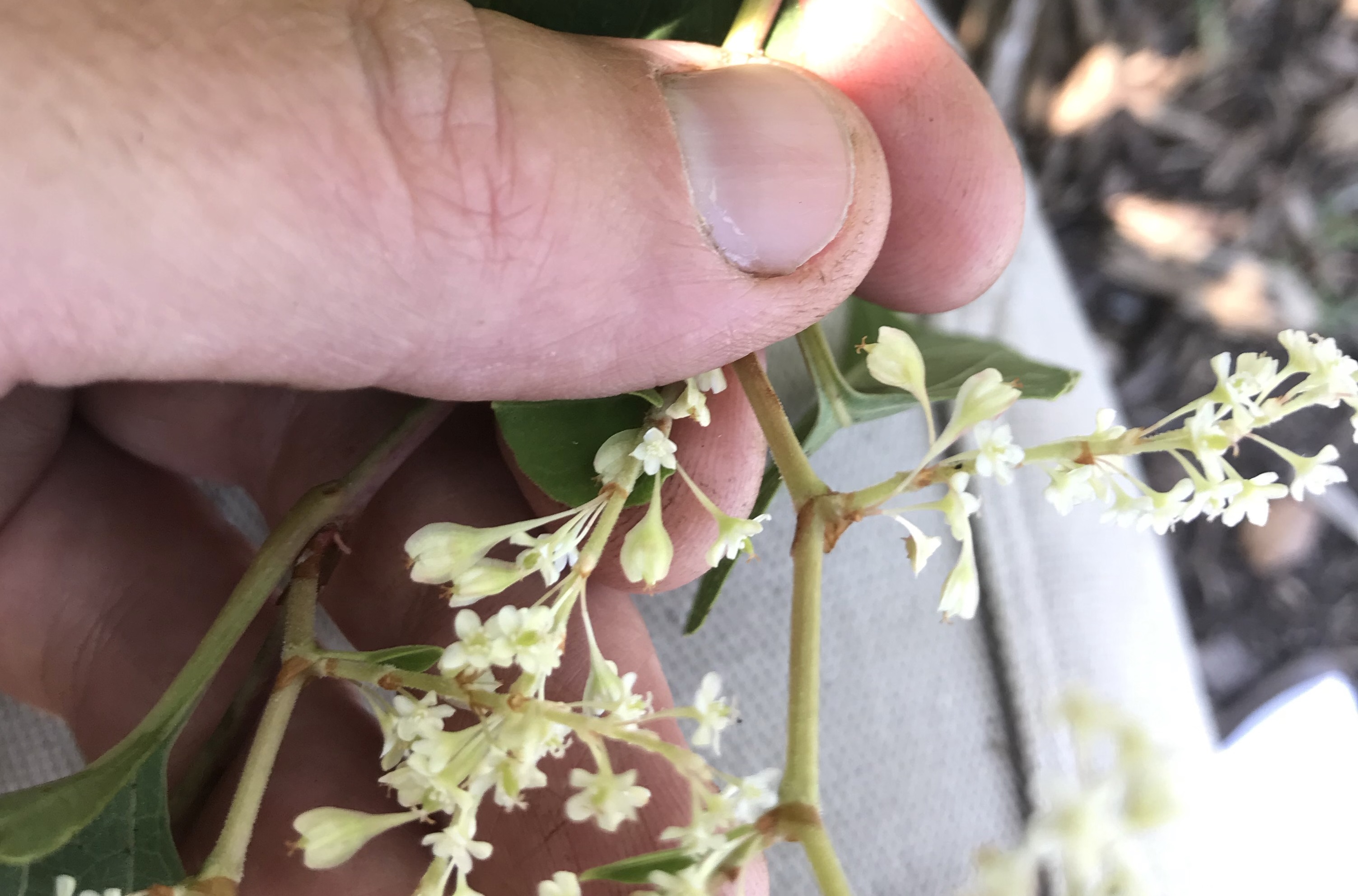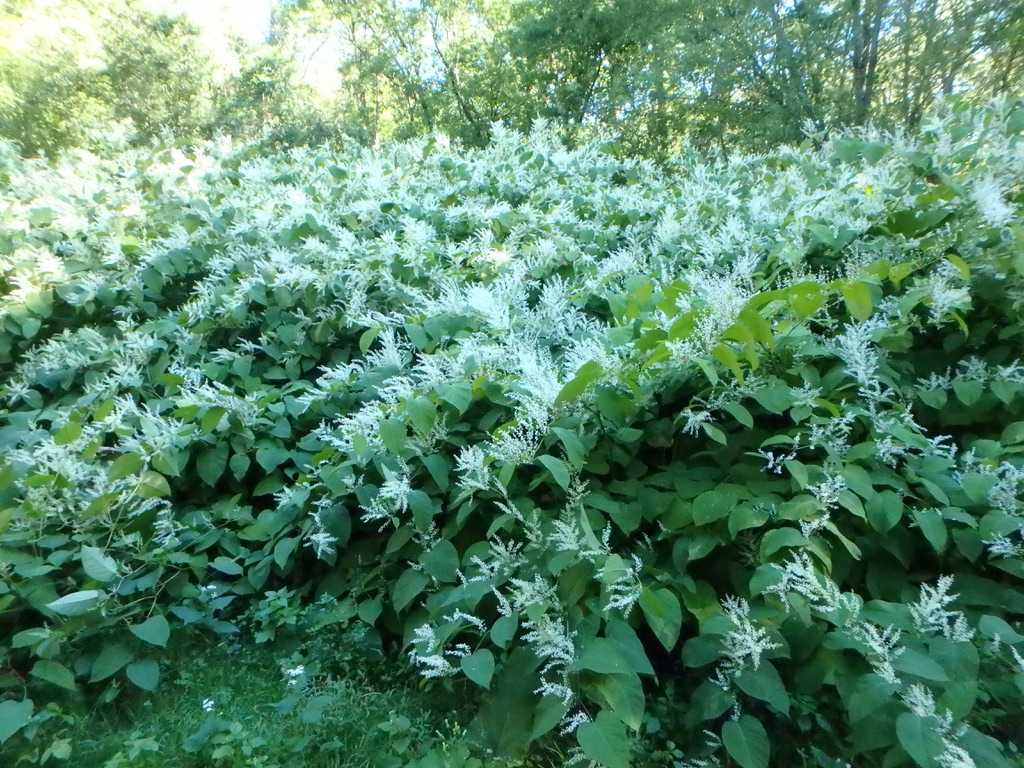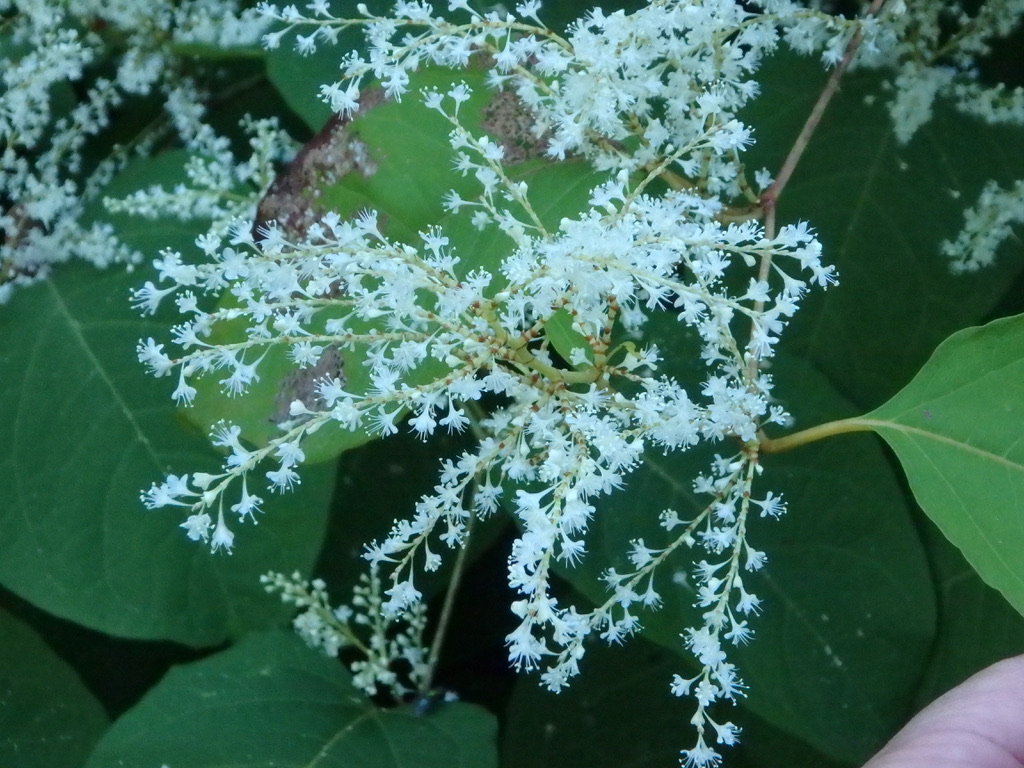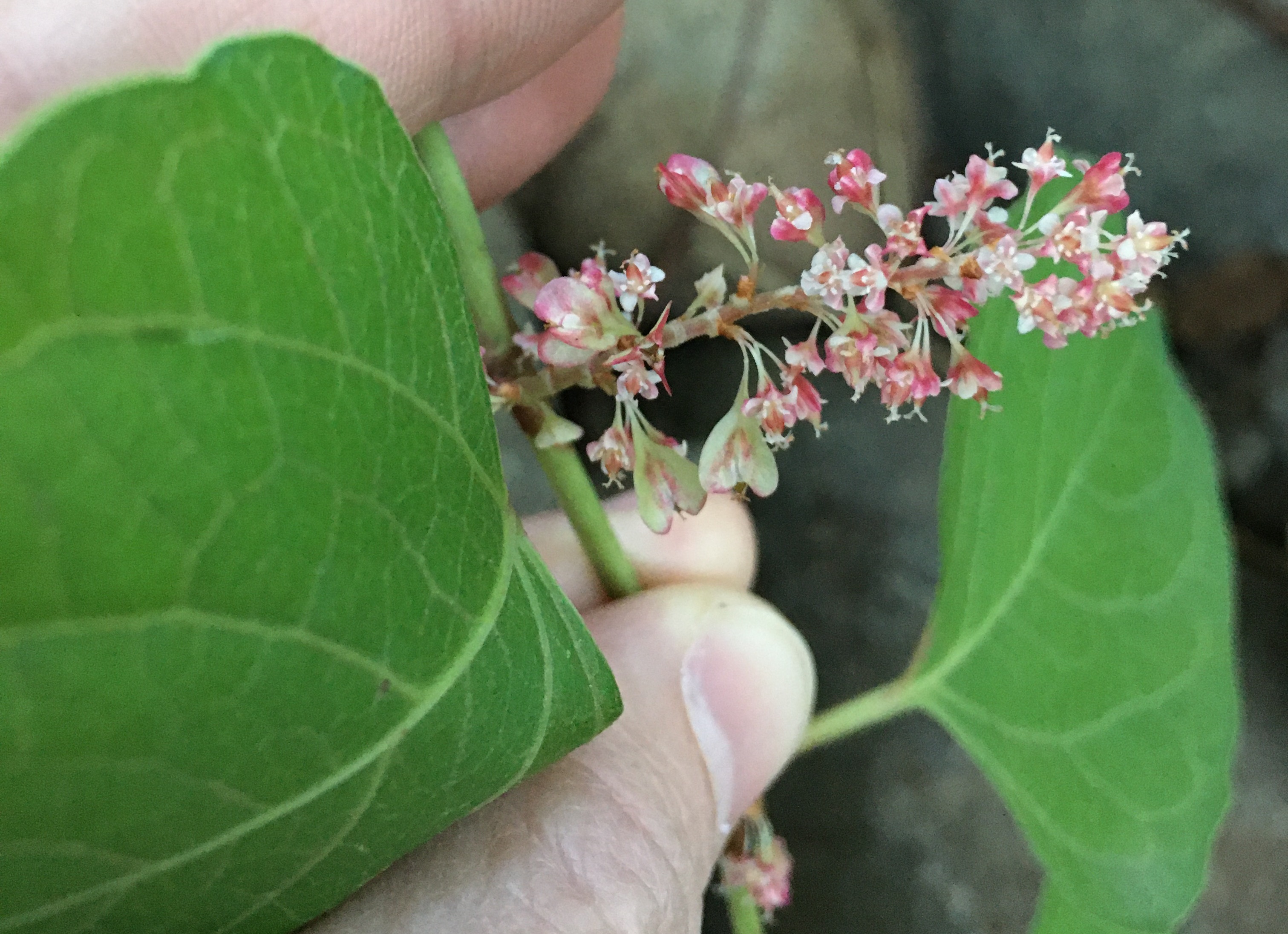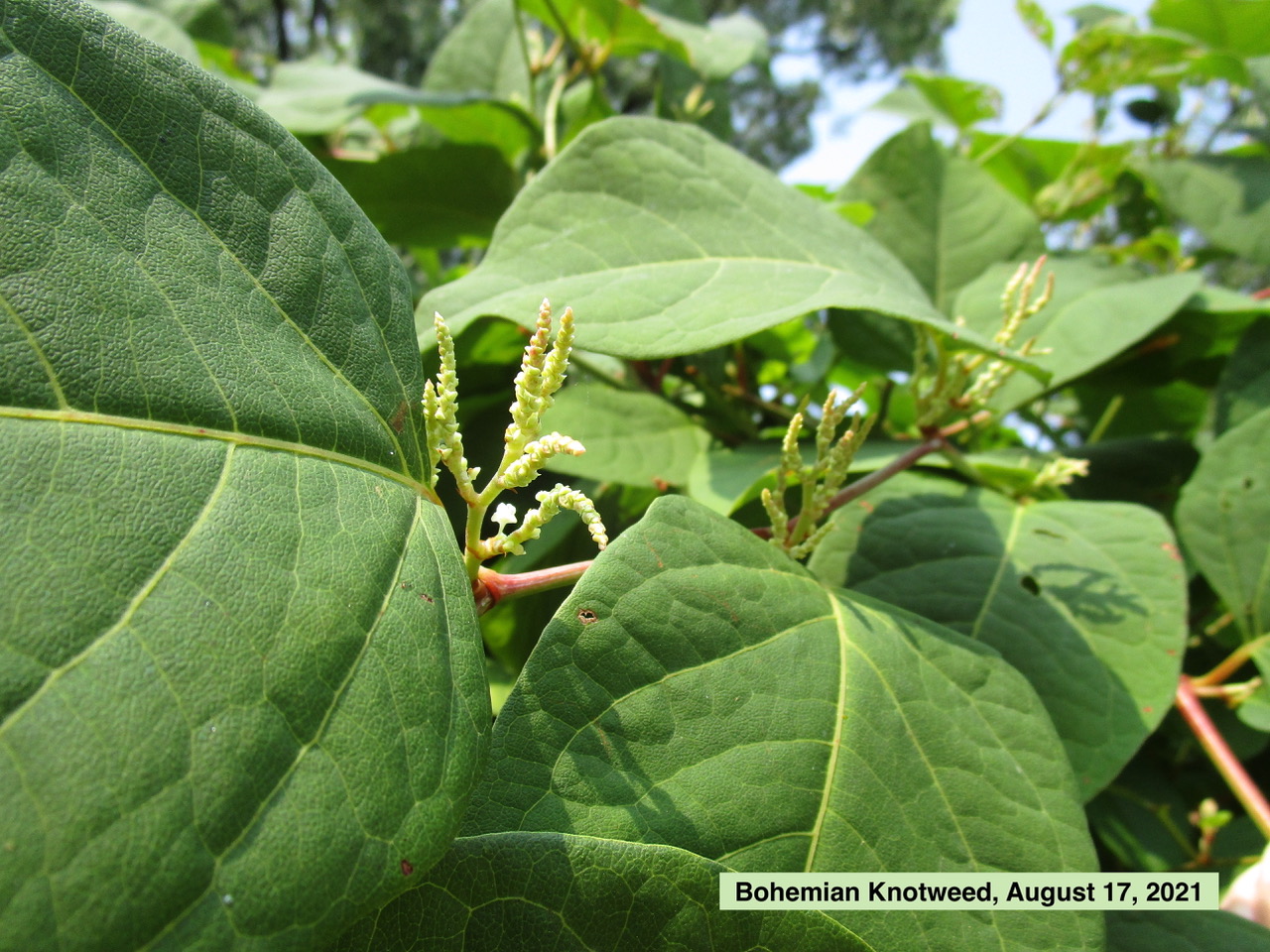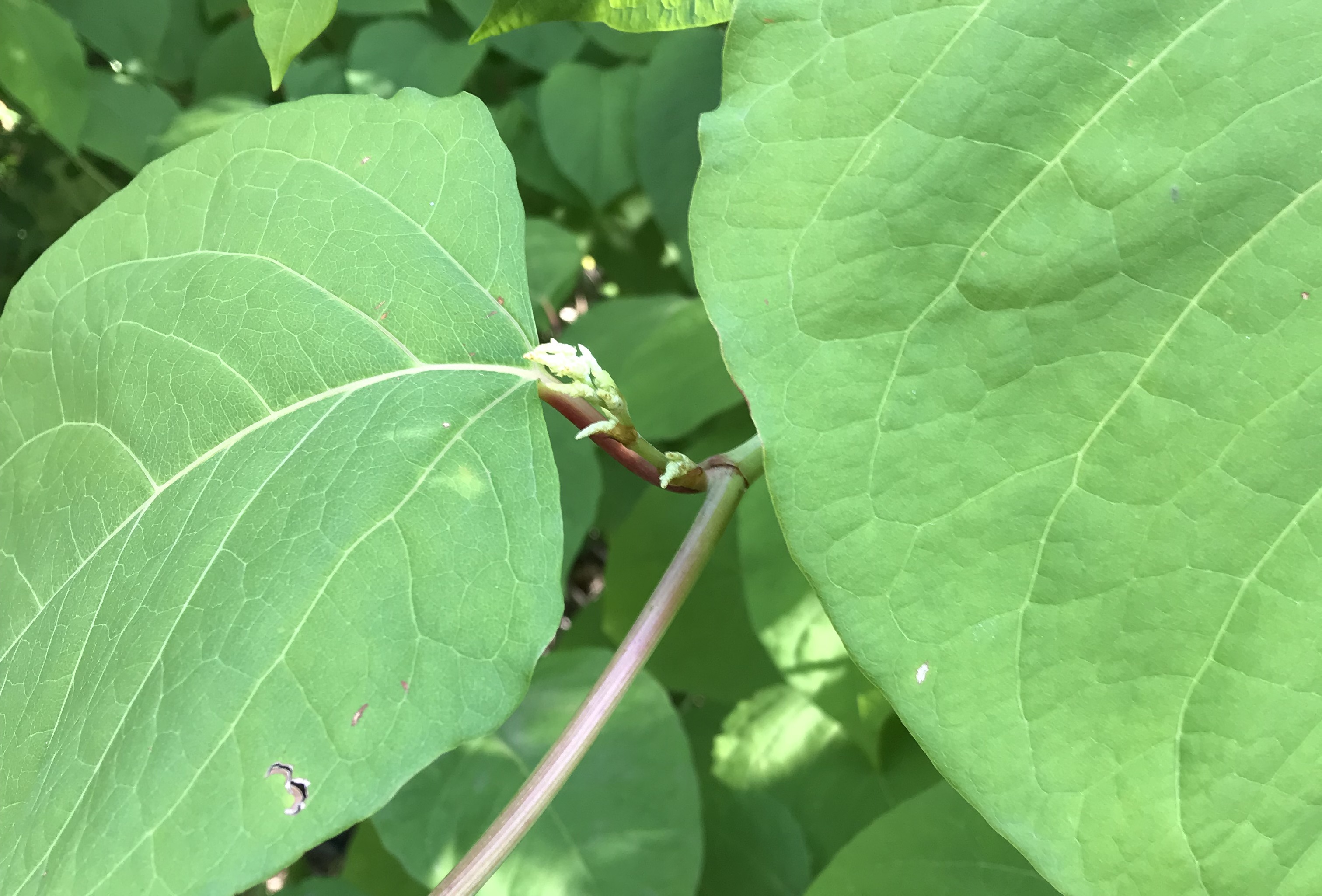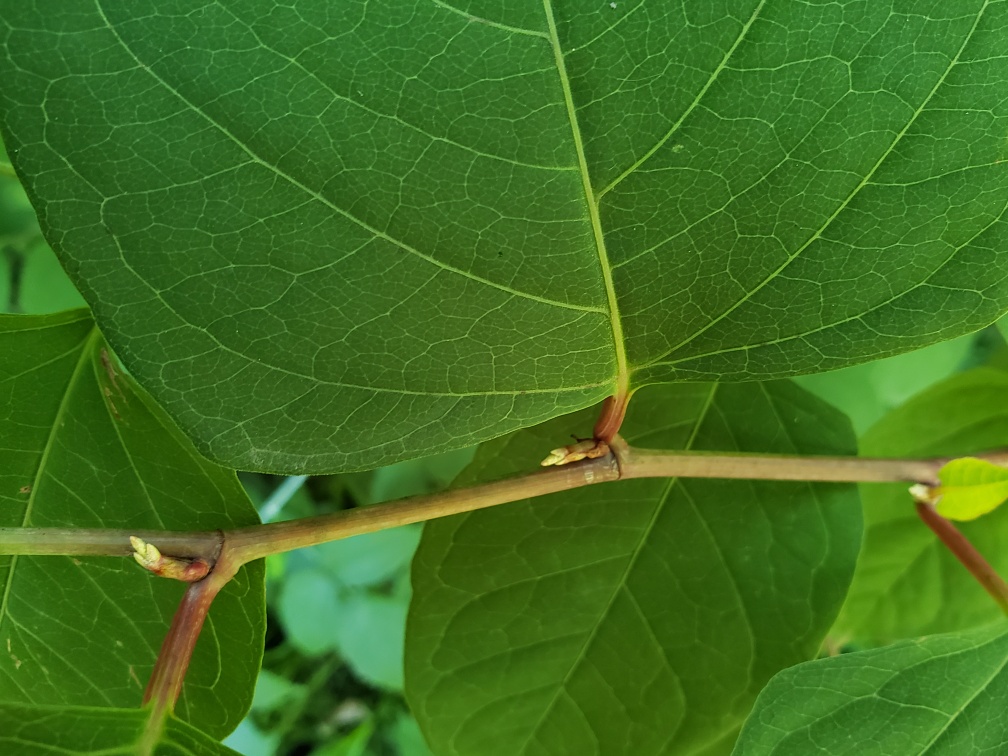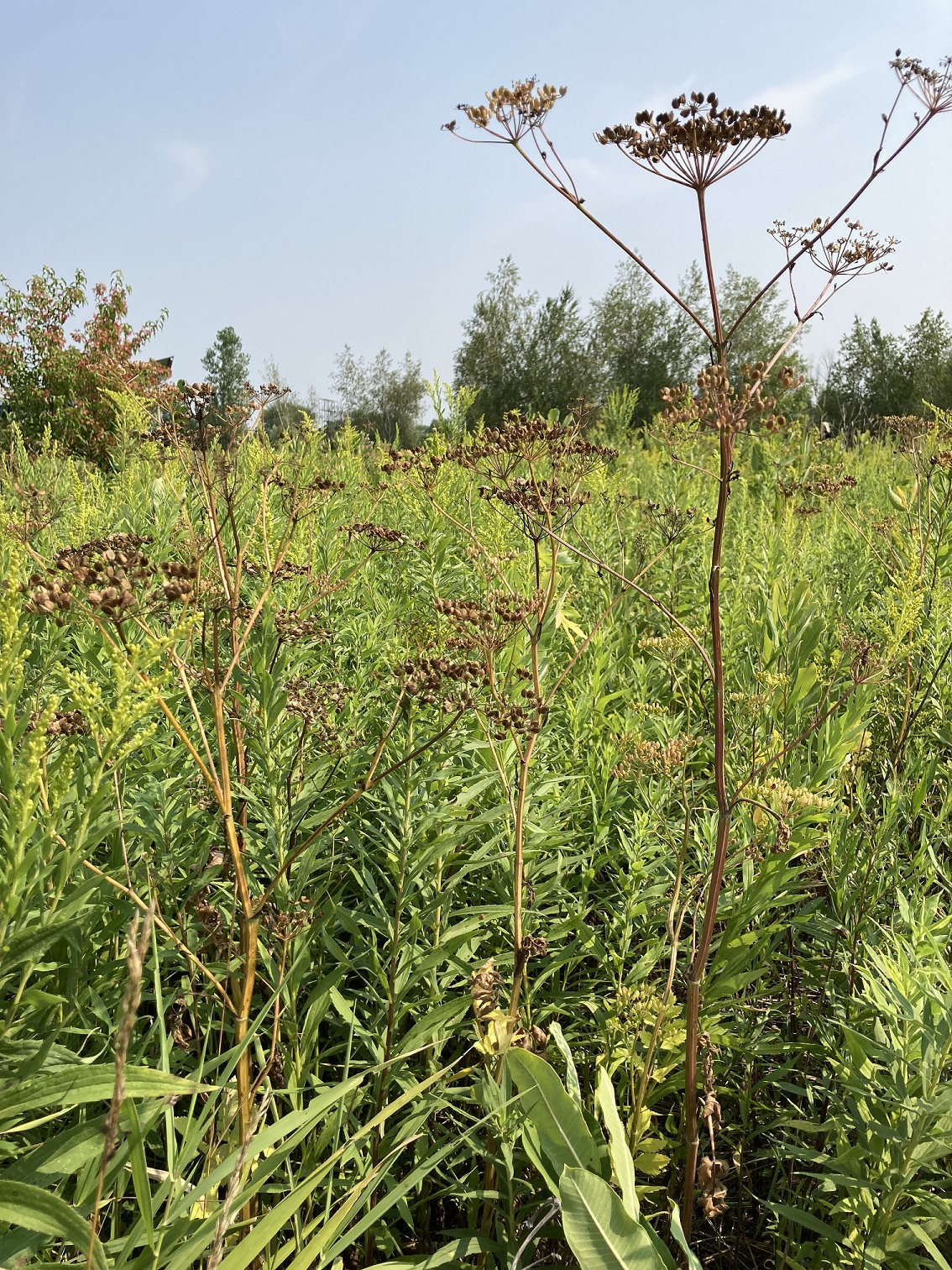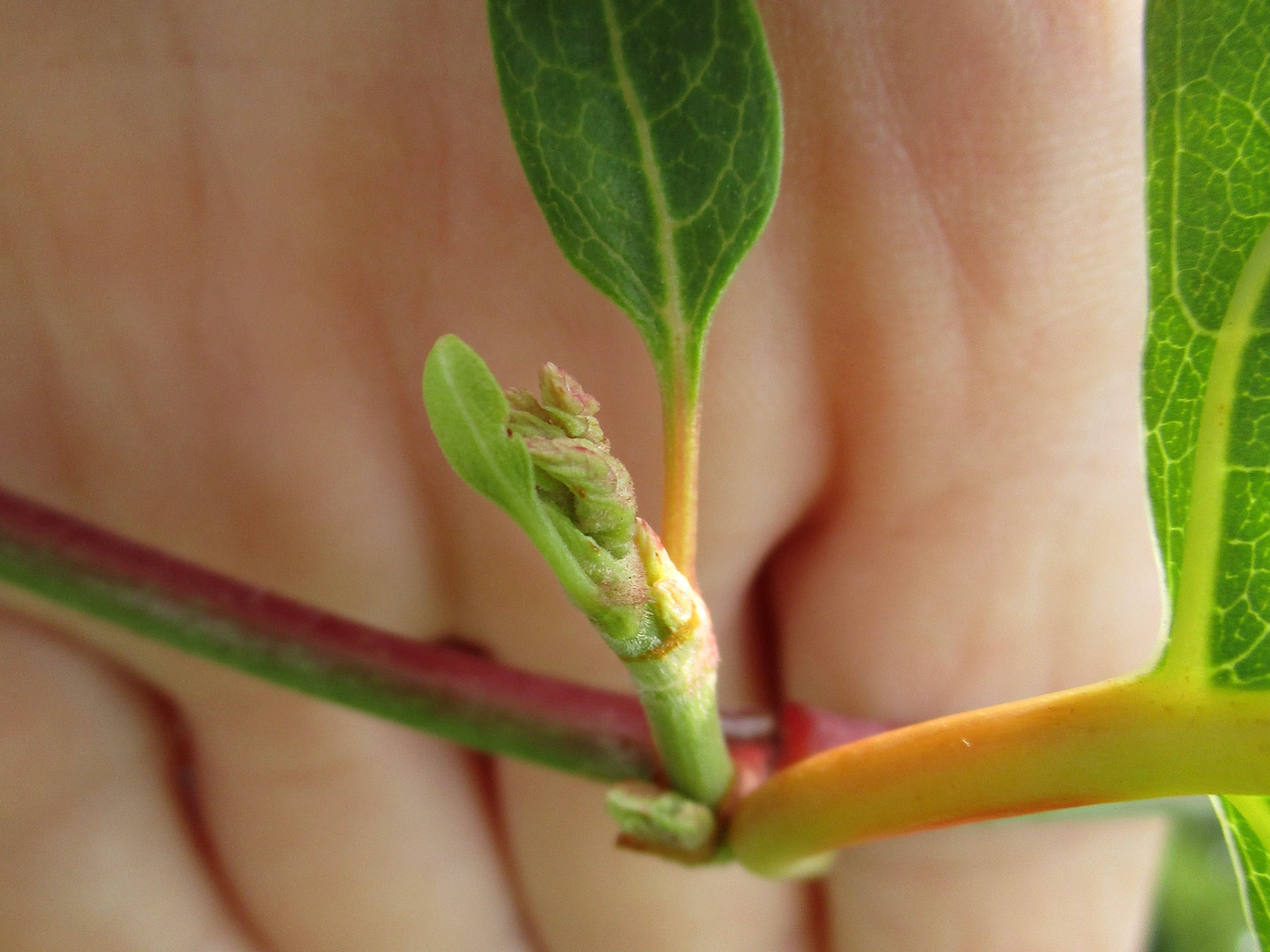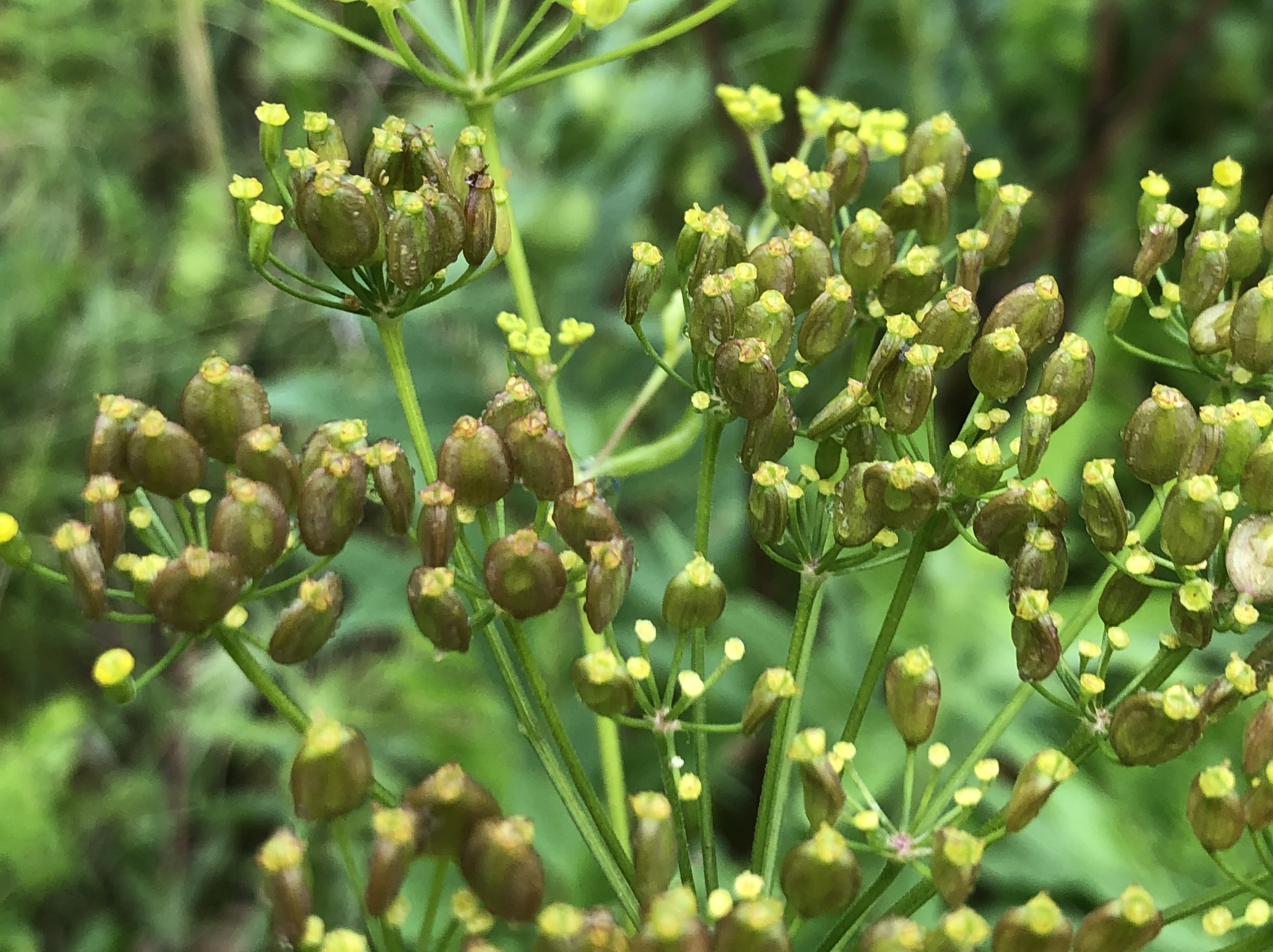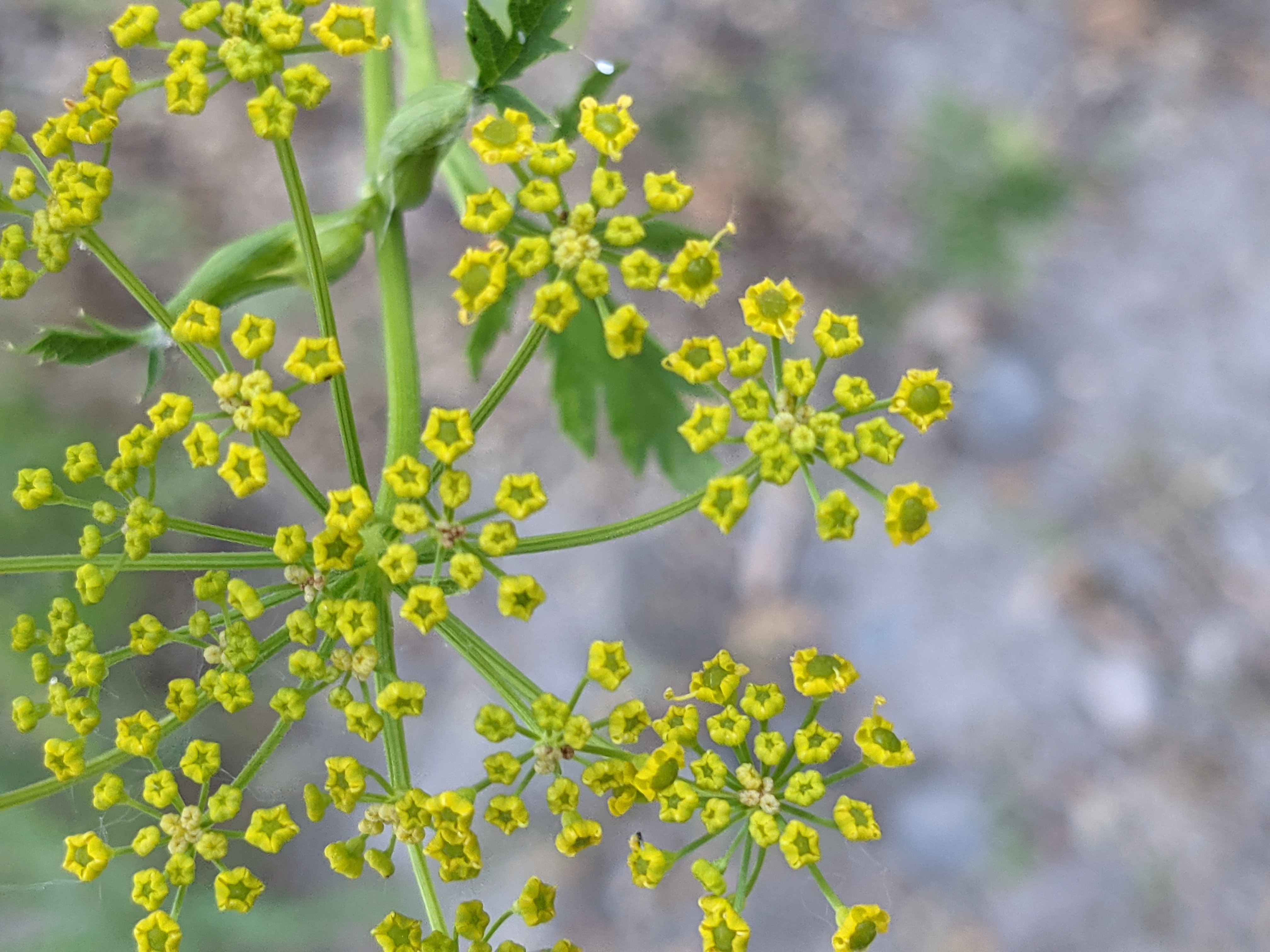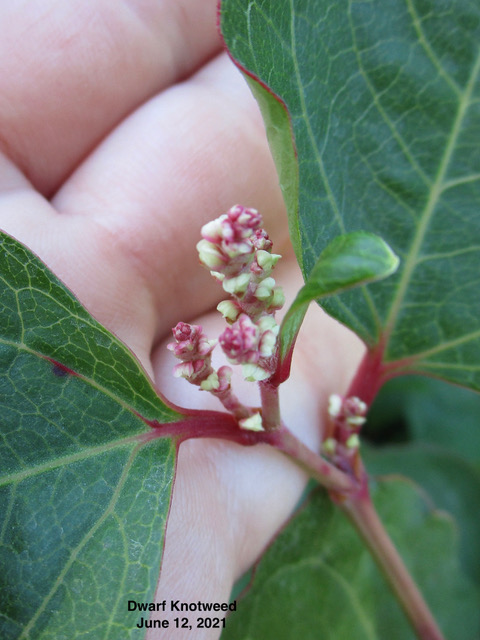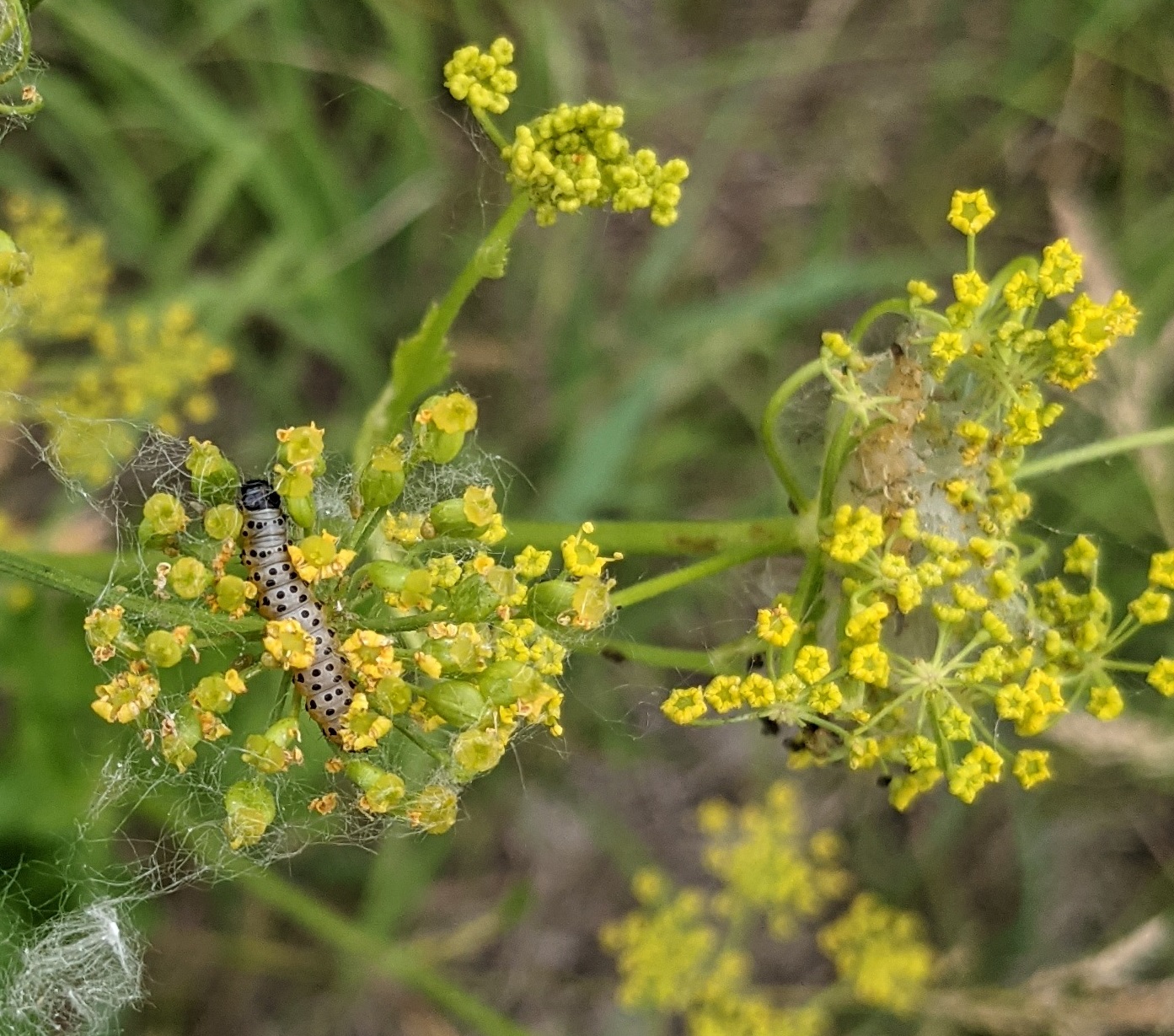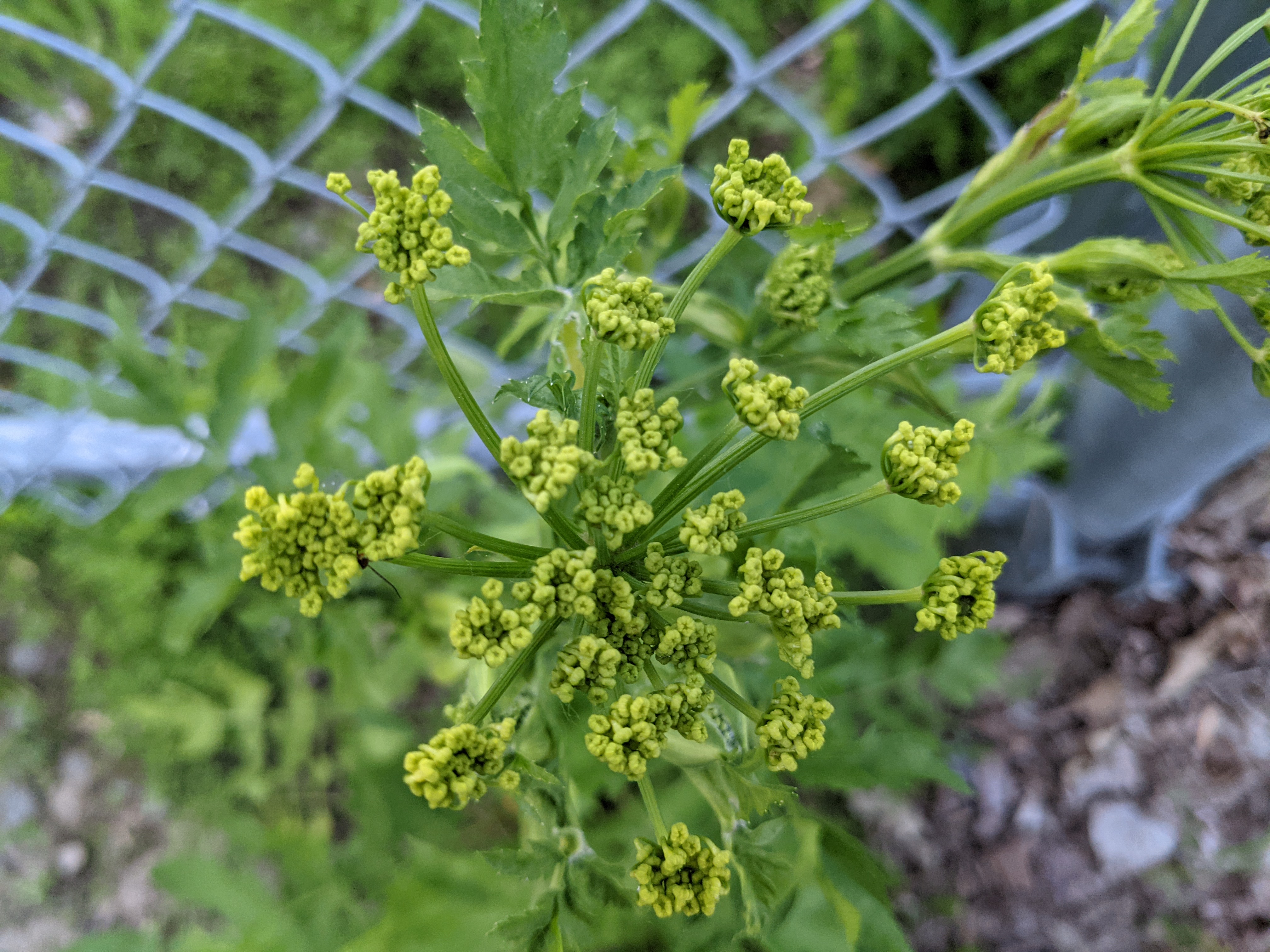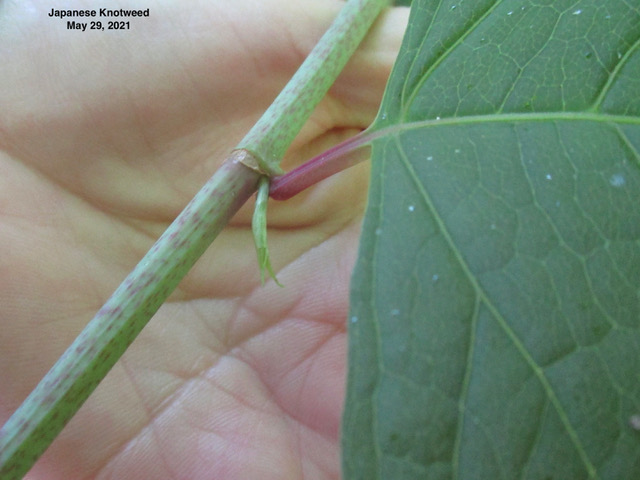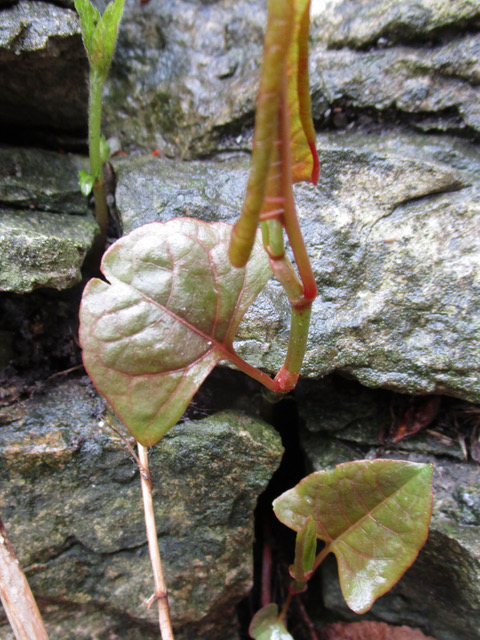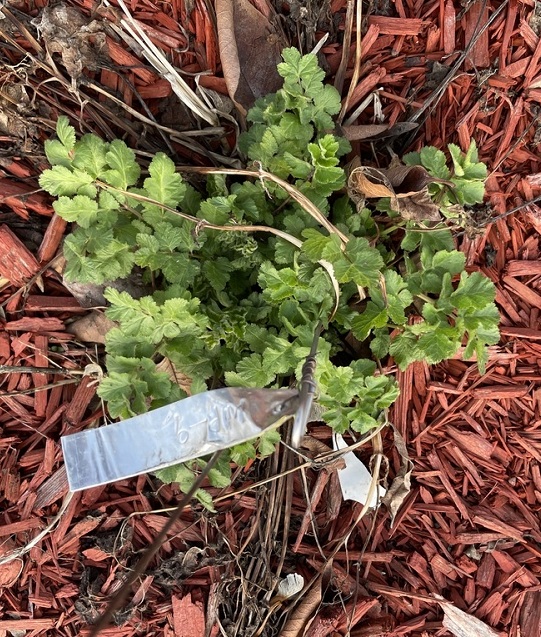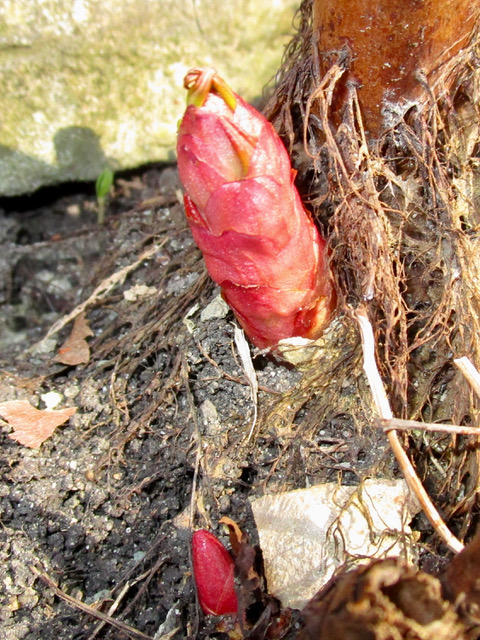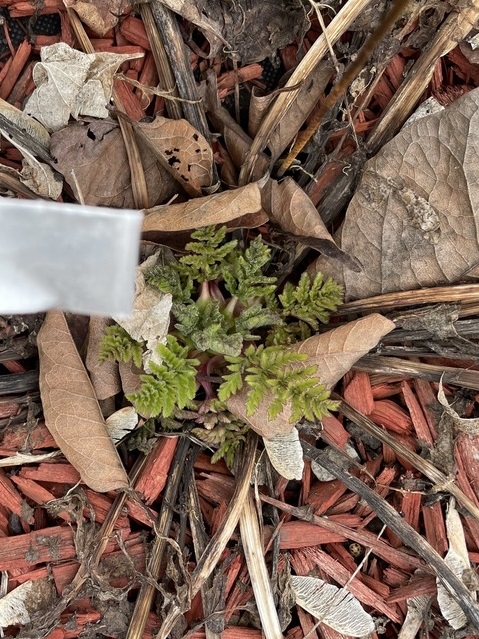Observers make science happen.
Participants observe wild parsnip and knotweed across Minnesota (and beyond). Here are some of their photos and stories.
Gratitude Party
To celebrate citizen scientists at the close of every year I host a Gratitude Party over Zoom. The party for 2022 took place on Thursday, December 8th and was attended by 20 merry revelers. In keeping with tradition, we played trivia as a way to meet new people and have the fun of sharing knowledge.
Scoreboard:
Citizen scientists are an intrepid crew. So not surprisingly, everyone jumped in to give the game a go. Well done!
- 1st Place: The Invaders (Tim, Ralph, Joe, and Susan)
- 2nd Place: Consensus Seekers (Bob, William, Patty, and Anita)
- 3rd Place: Born to be WILD!! (Stephan, Sarah, Sue, Diane, and Marcia)
- 4th Place: Thorny Trivia Trackers (Samantha Bob, Barbara, Karen, and Teresa)
The Trivia Game is freely available to everyone:
Spoiler Alert: Answers are discussed in this section.
You may want to play the trivia game BEFORE reading this section. When you are ready, click to expand.
Spoiler Alert: Answers are discussed in this section.
You may want to play the trivia game BEFORE reading this section. When you are ready, click to expand.On December 8 ...
- All teams correctly identified moonseed and mayapple as toxic plants. Phew! Stay safe out there!
- All teams knew that wild rice is Minnesota's state grain and that the Mall of America is the state's top tourist attraction.
- Only one team (The Invaders) guessed correctly that the "twig eater" is another name for Alces alces, the moose.
- Only one team (Thorny Trivia Trackers) successfully identified the words for "hello" in Karen, Hmong, and Somali.
- Only one team (Thorny Trivia Trackers) knew that Lizzo was not born in Minnesota.
"Yes" to 'Open flowers' on knotweed plants (and a close look at details)
August 29, 2022
Bill, who observes knotweed near Becker, Minnesota, reported the start of the 'Open flowers' phenophase. Flowers are considered "open" when the reproductive parts (male stamens or female pistils) are visible between or within unfolded or open flower parts (petals, floral tubes or sepals).
Bill's photo presents an excellent opportunity to look closely at 2 details circled below:
1: Inspect the stamens. If they are visible, the flower is open. Next, notice if the stamens are conspicuous or not.
- Stamens are not conspicuous: In Bill's image, stamens are the tiny yellowish spots within the white petals (left circle). They are short and don't extend beyond the petals.
- Alternatively, if stamens are conspicuous, then the plant is not Japanese knotweed. Conspicuous stamens are a clue that you are looking at Bohemian knotweed, a hybrid type of knotweed. Click here to see what conspicuous stamens look like. (Click here for guidance on plants that have been misidentified.)
2: If you see heart-shaped structures (one is circled in the image above), they may look like fruit but are in fact flower buds. Here are kinds of evidence for why this heart-shaped structure is a bud and not a fruit:
- Size: It is smaller than the open flower. (Fruits are either the same size as flowers or slightly larger than open flowers.)
- Placement relative to flowers: On any given spike, flowers near the base open first. Over time, the wave of development moves to the tip. Because we see open flowers only at the base and heart-shaped structures near the tip, we know those heart-shaped structures are closed buds, not fruits.
- For more images and guidance on discerning flower buds from fruits, see the August 2021 newsletter (link).
Compacta knotweed enters reproductive phase
June 20, 2022
The scaly texture of this new growth tells us that flowers are developing. These are tiny flower buds in a very early stage. When you see something like this, answer "yes" for the 'Flowers or flower buds' phenophase.
To make your phenology data extremely high in quality, try these two practices:
- Learn to detect phenophases based on their earliest appearance. You can build this skill year by year.
- Increase the frequency of your observations during periods when you anticipate the start of a phenophase. Compacta knotweeds may have already started to show flower buds in June. For non-compacta plants, flower buds might not appear until late August or September. As always, your "mileage may vary" because every plant undergoes and responds to distinct conditions.
Flower phenophase begins for wild parsnip!
June 6, 2022
Kudos to observer Bill, who detected flowers on wild parsnip near Becker, Minnesota. Bill's observation is a great opportunity to examine the "compound umbel" of wild parsnip.
Review the images below to understand how the parts of a compound umbel are arranged and connected.
'Initial growth' phenophase of wild parsnip
May 4, 2022
In this photo, a few fresh leaves are unfolding, but none are fully unfolded yet. Therefore this fits the definition for 'Initial growth'. As soon as at least one leaf is fully unfolded, the 'Initial growth' phase will have ended and the 'Leaves' phase begins.
Also in this picture, you can see the top of the tap root which is visible above the soil.
Wild parsnip leaves - tiny and unfolded
April 23, 2022
This photo shows the 'Leaves' phenophase because at least one leaf is fully unfolded. Keep in mind that a single wild parsnip leaf consists of multiple leaflets, all of which must be unfolded to meet the 'Leaves' phenophase definition.
Thinking ahead: How to recognize & count flowers on wild parsnip
April 20, 2022
As soon as you see the first sign of flower buds, it's time to answer "yes" for the phenophase named 'Flowers or flower buds'. Clues to look for are clusters of lime-colored buds, the shape and size of tiny beads.
Count clusters (or umbels) when you answer the question, "How many flowers are present?" In the photo below, 6 clusters are present so the best answer choice is "3 to 10".
What to do when snow cover is on-again-off-again
April 4, 2022
Last week, Bill observed knotweed in the 'Initial growth' phase. But this week, snow covers the ground. How should Bill answer the question, "Do you see 'Initial growth'?"
This is an instance to use the "?" answer choice and add a comment "snow covers ground" (or words to that effect). Nature's Notebook guides observers to:
- Choose YES if the phenophase was occurring
- Choose NO if the phenophase was not occurring
- Choose ? if you were not certain the phenophase was occurring
- Leave it BLANK if you did not look for the phenophase
What does melting snow reveal?
March 14, 2022
This week, Charlie saw bare ground at an experimental plot near Waseca, Minnesota. After a bit of exposure to the sun's warmth, expect to see the first signs of initial growth for both wild parsnip and knotweed. Be on the lookout and enjoy your early-season observations.
Abbie identifies knotweed in the snow
January 4, 2022
Identify knotweed (in winter) by checking for these traits:
- Color - often in winter, dead knotweed plant material has a vibrant rusty or orange color, a strong visual contrast to a snowy, monochrome environment
- Zig-zag stems - for example, in lower-right corner
- Hollow stems - not shown
- Panicles - flowers and fruits form in clusters called panicles - you can see these bare structures about 1/4 from the top of the image, midway between left and right edges.
- Location - in urban areas, knotweed is commonly used as a landscaping plant. This individual is between a YWCA building and the sidewalk
- Leaf shape - below, the squat heart-shape is characteristic of var. compacta knotweed (also called "dwarf knotweed")
What about phenophases?
- Initial growth - [leave blank] because I did not check the ground, where new shoots emerge
- Leaves - No (the only leaves present are dead)
- Flowers or flower buds - No
- Open flowers - No
- Fruits - No (I checked the old fruit-bearing structures, but saw no fruits present)
- Ripe fruits - No (as above, checked relevant parts of the plant)
- Recent fruit drop - [leave blank] This phenophase asks me to compare what I see against my previous visit, a comparison which cannot be made when the plant is new to the observer.
Is this plant alive or dead? Underground, this plant's rhizomes (or root-like structures) are alive. All above-ground parts of the plant are dead and will decay rather than greening up in the spring.
Save the date for Tea Tuesday with Elizabeth Spinney
Posted December 17, 2021
Join Tea Tuesday on February 15 at 3 pm (Central Time) for a guest presentation by Elizabeth Spinney.
No registration required. At the appointed time, click this link to join the Zoom meeting.
Have you ever wondered what happens to phenology data once it’s collected, and who uses it? Join us in conversation with our colleague, Elizabeth Spinney, from the Vermont Dept. Forests, Parks & Recreation’s Forest Protection Program to hear how land managers and scientists use this data to inform action. She’ll share how your work is informing and inspiring action in Vermont, from starting a brand new phenology project in 2022, to creating a podcast focused on plant phenology!
Save the date for Tea with Erin Posthumus
Posted December 15, 2021
Join Tea Tuesday on January 18 at 3 pm for a guest presentation by Erin Posthumus. (No registration required. At the appointed time, click this link to join the Zoom meeting.)
Your Pesky Plant Trackers data are part of a National Database!
What happens to your observations when you hit that submit button? They become part of the National Phenology Database, managed by the USA National Phenology Network (USA-NPN) and used by researchers, decision makers, and the public! In this presentation, you'll learn how to use the USA-NPN's tools to visualize your data and compare them to observations collected across the country.
Save the date for Tea with Amy Morey
Posted November 30, 2021
Join Tea Tuesday on December 14 at 3 pm for a guest presentation by Amy Morey. (No registration required. At the appointed time, click this link to join the Zoom meeting.)
Location, location, location: The importance of distribution records in contending with invasive species (and how you can help!)
In this talk, Amy Morey describes how records of occurrence are critical for research and making decisions related to invasive species. Of particular note will be the vital role citizen scientists serve in surveying and monitoring for invasive species.
About the speaker: Amy Morey, PhD, a research associate at MITPPC, joined the board of directors at North American Invasive Species Management Association (NAISMA) this fall. Morey’s research expertise in invasion biology and pest management, and her work with MITPPC make her uniquely positioned to succeed in a leadership role with NAISMA.
Celebrate Your Science!
November 11, 2021
Last night's Gratitude Party celebrated over 200 volunteers engaged in MITPPC research. Watch the video below for a sense of just how much you have done!
The evening's main entertainment was a quiz game, played by teams of volunteers from Pesky Plant Trackers and Cover It Up. If you would like to play the Quiz Game (with answers at the end), please use this link (https://umn.qualtrics.com/jfe/form/SV_51gBa7x8cRfo3Pw) and feel free to share widely.
Finally, join me in congratulating the Quiz Game Winning Teams:
- 1st place: Y2K with 31 points, Bob H., Stephanie S, Ed M., Tim O., and Rob V.
- 2nd place: Pesky Thorns with 30, Anita H.F., Chris B., Elizabeth H., and Michael B.
- 3rd place: The Dudes with 29 points, Steve P., Dale N., Rebecca M., and Bob D.
Susan sees leaves, both live and dead
October 25, 2021
The left photo includes live leaves. They are supple (not dried out) and still green, even though the green is pale. This is evidence that the leaves are still photosynthezing, or converting the sun's energy into sugars. In contrast, dead leaves can be seen in the photo on the right. Recognize dead leaves by their dry texture and brown color.
Answer "yes" to the 'Leaves' phenophase when there is at least one live, green leaf on the plant or patch. At this time of year, when cold temperatures are starting to affect leaves, you may see a mixture of both live and dead leaves on a patch or plant. Because the 'Leaves' phenophase asks for a yes/no answer and there is no abundance measurement, data collection can be fairly simple even if what you observe is mixture of leaves that appear alive, dead, and somewhere in-between. If you see at least one live, green leaf, answer "yes". It is not necessary to come up with a general status for all leaves or determine the status of each leaf.
Charlie observes signs of frost kill
October 19, 2021
Q: Do you see leaves?
A: Yes, one or more live, fully unfolded leaves are still visible on this patch of knotweed. Keep checking on your plant about once a week so you can observe the end of the 'Leaves' phenophase.
Q: When am I done observing?
A: Wrap up your season when you are ready. There is no universal end date. When the plant (or patch) you observe dies or goes dormant, that is a good time to pause until next year.
Crystal sees flowers drop, but no fruits forming
October 15, 2021
Q: One expects to see fruits form after flowers, correct?
A: Yes in general, but there are cases when this doesn't happen. When knotweed plants are under stress, they may drop flowers before fruits develop. Crystal is one of several observers who has waited for fruits but is not seeing them.
Q: Should you worry that fruits developed and fell off before you saw them?
A: No, not if you observe carefully every week and know how to identify fruits (click here for photo of unripe fruit). It takes 2-3 weeks for fruits to form. Therefore, your weekly routine will give you opportunity to see fruits if they are in fact present.
Susan sees ripe and unripe fruits
October 11, 2021
Barb notices bare flower structures, only a few fruits
October 9, 2021
It is not unusual for knotweed flowers to fall before developing into fruits, or for unripe fruits to fall before ripening. Some observers may ask, won't that mean I never get to observe the last two phenophases, 'Ripe fruits' and 'Recent fruit drop'? Yes, possibly, but that's okay. Your records of what you see with your own eyes in the real world are much more valuable than generalized ideas of what's expected. When you report based on evidence you see, you're doing valuable science. Thanks, Barbara, for these photos!
Laurie sees fruits & dead flowers on knotweed
September 28, 2021
Based on what is seen in this photo (click to enlarge), an observer could report on phenophases as follows:
- Leaves? Yes
- Flowers or flower buds? No (The rusty-colored structures are dead flowers. They are not fresh.)
- Open flowers? No
- Fruits? Yes (The pale green tear-dropped shapes are unripe fruits.)
- Ripe fruits? No
Margaret decides their knotweed is Bohemian, not Japanese
September 26, 2021
Kudos to observer Margaret, who gathered different kinds of information and noticed that their knotweed is Bohemian, not Japanese. Some of the clues they used were:
- Primary evidence: Conspicuous stamens visible in open flowers (see image below)
- Supporting evidence: Leaf shape is floppy without flat base
- Supporting evidence: The overall stand is tall, over 10 feet
So what should Margaret do, now that the plant is identified?
- If you have been collecting data on paper datasheets, you are now ready to enter your observations online. The steps are:
- If you have not already done so, use the Nature's Notebook website to add your site to your account. (Watch a how-to video.)
- Then add your plant to that site, with the correct species identification. (Watch a how-to video.)
- Next, transcribe records from your paper datasheets to the website. (Watch a how-to video.) or the mobile app. If you do this on the mobile app rather than the website, be careful to select the correct data for every observation. You cannot change the date of an observation after submitting it.
- If you have been collecting data in Nature's Notebook (app or website), but the species was misidentified, here are steps to take:
- This kind of change must be handled by Nature's Notebook staff.
- Take these steps to alert Nature's Notebook staff:
- Go to your Observation Deck and scroll down.
- Select the plant in question and click "Add or Edit Plants".
- On the "Add or Edit Plants" page, make sure you are editing the correct plant (based on the site and nickname)
- Click the checkbox next to "Delete?". A popup window will appear, asking why you want to delete the plant.
- Select "Misidentified Species".
- You will be prompted to contact Nature's Notebook for more information. In your message, explain to Nature's Notebook staff that you are seeing evidence to change the species identification from Japanese to Bohemian.
Susan sees flowers and fruits, both attached and fallen
September 19, 2021
Sometimes knotweed flowers and fruits fall off the plant before developing. When collecting data, ignore parts that are fallen and only assess structures that are still attached to the plant.
Bill sees fruits, open flowers, and dead flowers on knotweed plants
September 20, 2021
Meanwhile, some flowers have died on this Bohemian knotweed plant (pictured below).
Sue starts observing Bohemian knotweed
September 18, 2021
Do you see open flowers? Yes. Notice that the stalk is mostly bare, and several flowers have fallen off. This is common. When collecting data for Nature's Notebook, only assess parts of the plant that are still attached.
Is it too late to start observing knotweed in September? No. Observers may start whenever they are ready. For more about when to observe, see:
- peskyplants.umn.edu/faq#observe-begin
- peskyplants.umn.edu/faq#observe-how-often
- peskyplants.umn.edu/faq#observe-end
Do you see conspicuous stamen? Yes. Stamen are the long structures that extend beyond the petals. They are made up of filaments with anthers at the tip. When a knotweed has conspicuous stamen, it is not Japanese knotweed. It is probably Bohemian.
Bill sees knotweed fruit
September 13, 2021
Charlie sees knotweed fruit
September 10, 2021
Near Waseca, Minnesota, the first few fruits are appearing on knotweed plants.
Bob sees high percentage of 'Open flowers'
September 8, 2021
Do you see 'Open flowers'? Yes.
What percentage of all fresh flowers are open? This can be difficult to answer from a photograph, but the answer "75 to 94%" is reasonable.
Abbie sees fruits on var. compacta knotweed
September 7, 2021
This plant is exhibiting advanced phenology that we expect with the compacta variety. For contrast, non-compacta plants are not yet showing fruit.
Make sure your Nature's Notebook records include information about what kind of plant you observe. This is critical for scientists to appropriately analyze your data and make useful inferences. Click here for instructions how to do this.
Karen Kay observes knotweed flower buds
August 12, 2021
Steve observes webworm on wild parsnip flowers
June 11, 2021
If you observe insect infestations or damage, describe what you see using the comment section of your Nature's Notebook observation.
Abbie checks for knotweed shoots
March 30, 2021
If possible, gently lift and then replace debris that could obstruct your view of shoots or early leaves. Materials such as dead leaves and other debris can play an important role for newly emerging plants by regulating their microclimate. Every site is slightly different so find a balance between detecting early signs of growth and leaving site conditions unchanged.
